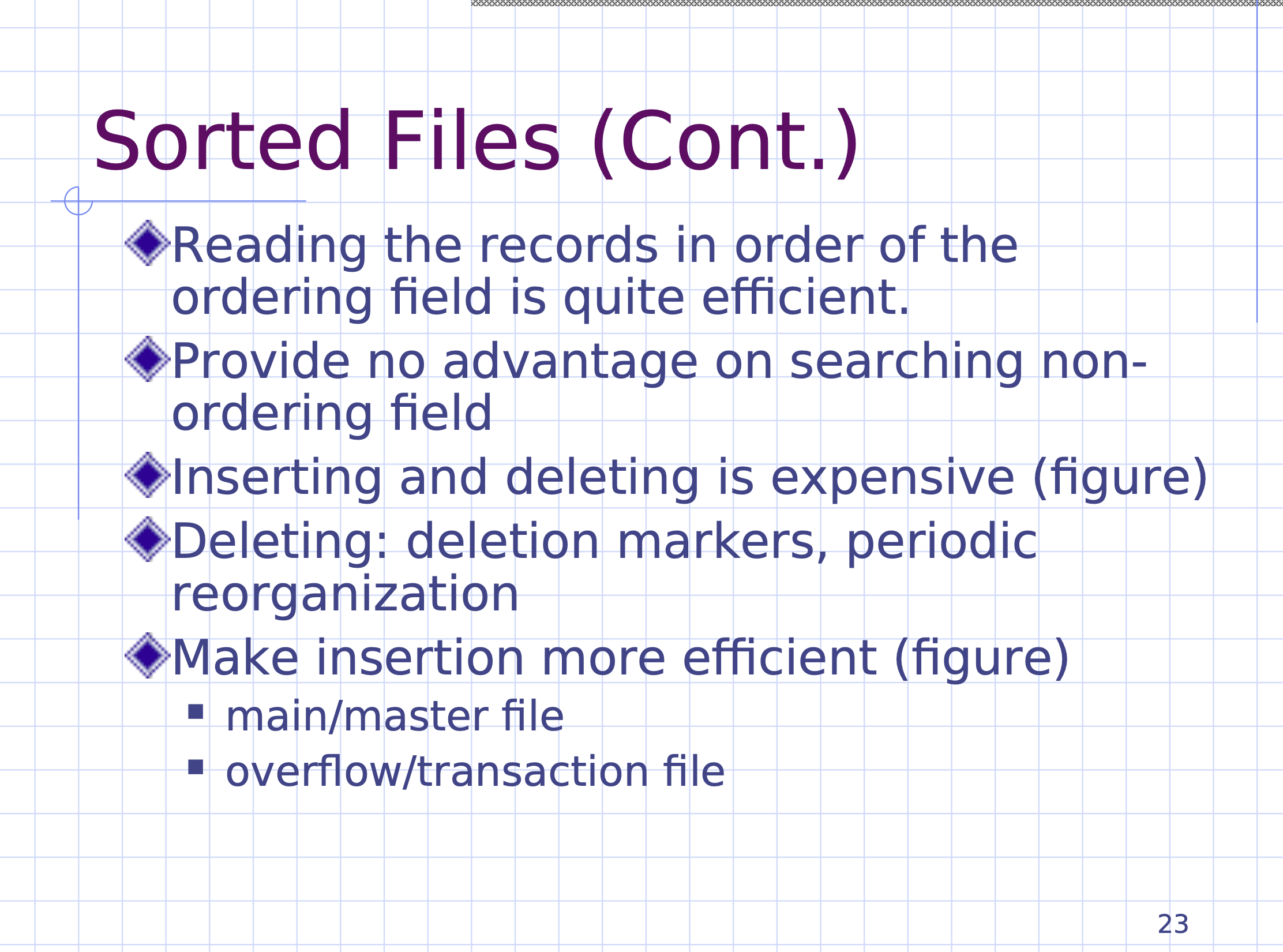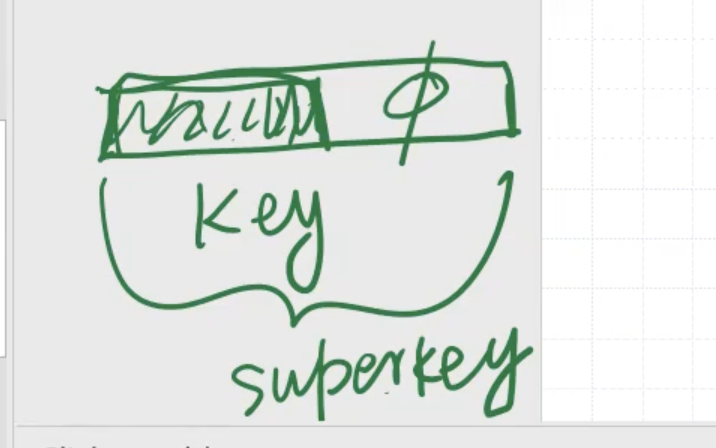Normalization cont. #
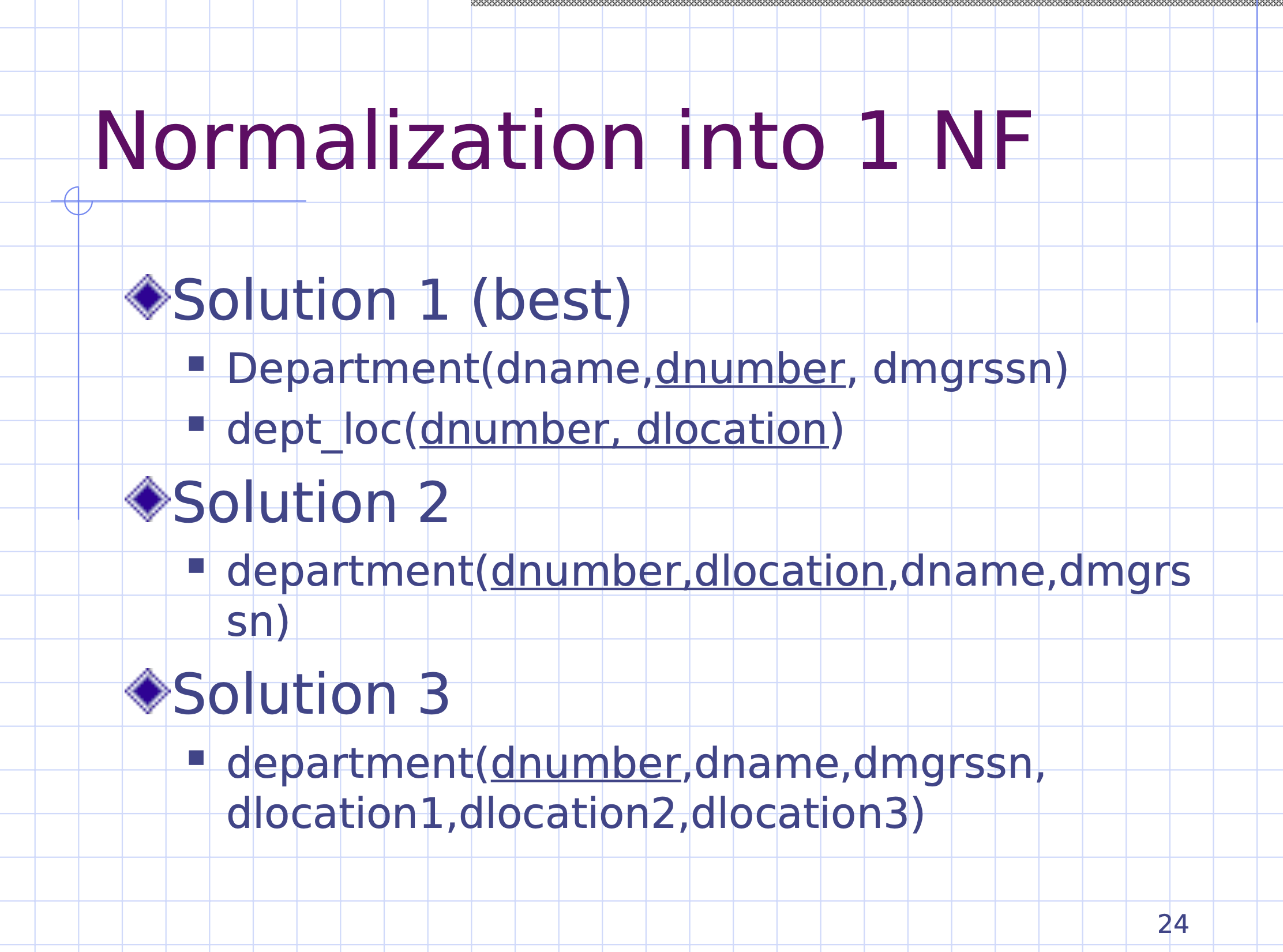
We can also use an alternate notation to indicate dependencies:

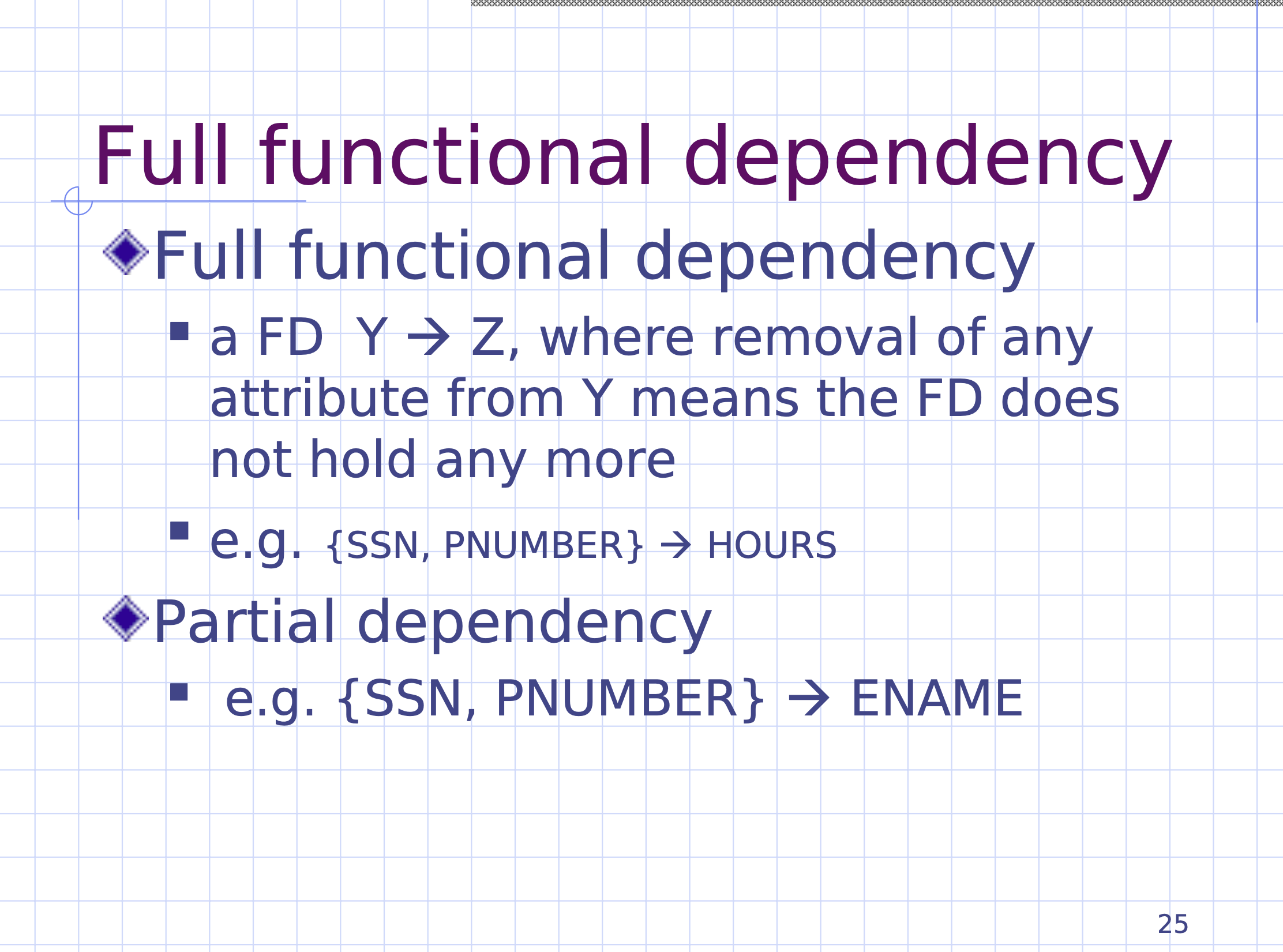
If we remove the ssn then the dependency is no longer true.
Second normal form #
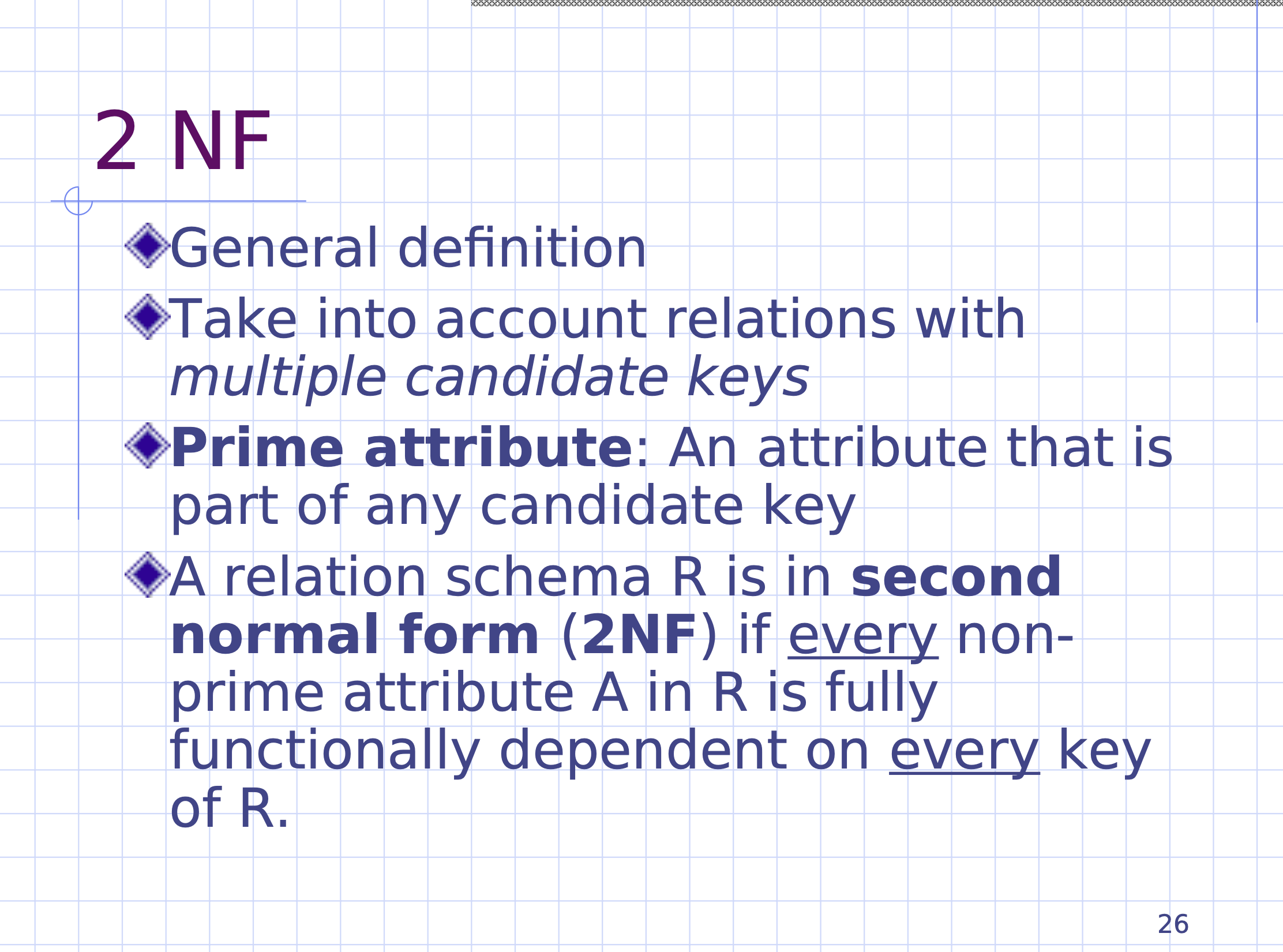
An attribute that is part of any candidate key is a prime attribute. If we have a relation \[\begin{aligned} R(a, b, c, d, e) \end{aligned}\] and our candidate keys are \( \{a,b\} \) and \( c \) , that means our prime attributes are \( a,b,c \) .
Any attribute that isn’t a prime attribute is called an non-prime attribute, that is it is not part of any candidate key. So our non-prime attributes from the last example are \( d,e \) .
A relational schema \( R \) is in second normal form if every non-prime attribute \( A \) in \( R \) is fully functionally dependent on every key of \( R \) .
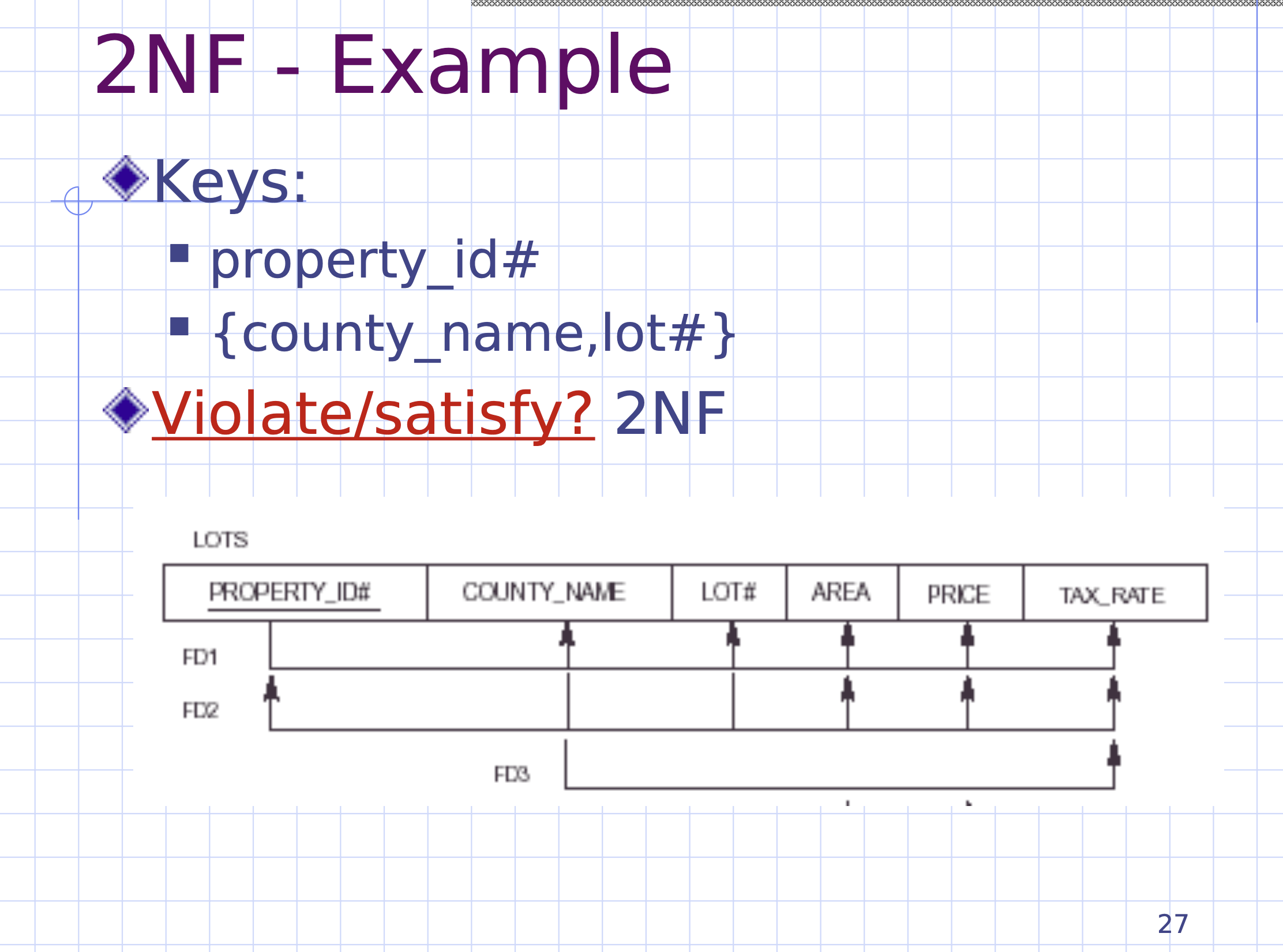
- FD1. if we know the
PROPERTY_IDthen we also know the attributesCOUNTY_NAME,LOT#,AREA,PRICE,TAX_RATE - FD2. if we know the
COUNTY_NAMEandLOT#, then we also know the attributesPROPERTY_IDAREAPRICETAX_RATE - FD3. if we know the
COUNTY_NAME, then we also know theTAX_RATE
So is this in second normal form?
- Our non-prime attributes are
AREAPRICEandTAX_RATE, we need to go through and make sure each of these non-prime attributes are fully functional on the keys.- Is
AREAfully functionally dependent onPROPERTY_ID? \[ \begin{aligned} \text{property id} \to \text{area} \end{aligned} \] Yes, because we cannot remove anything from the left hand side and have the dependency hold true. (Any attribute that depends on a single key will automatically be fully functionally dependent). - The rest of the non-prime attributes are fully functionally dependent on
PROPERTY_IDfor the same reason as above - Next we need to check if the non-primes are fully functionally dependent on the key
{COUNTY_NAME, LOT#}\[ \begin{aligned} \{ \text{county name, lot num} \} \to \text{area} \end{aligned} \] If we removeLOT#will this dependency still hold true? Yes, this is fully functionally dependent. (If there was another dependencyCOUNTY_NAME\( \to \)AREAthen it would still hold true). \[ \begin{aligned} \{ \text{county name, lot num} \} \to \text{price} \end{aligned} \] This is also fully functionally dependent for the same reason. \[ \begin{aligned} \{ \text{county name, lot num} \} \to \text{tax rate} \end{aligned} \] This is not fully functionally dependent because if we removeLOT#, there still exists a dependencyCOUNTY_NAME\( \to \)TAX_RATE(FD3).
- Is
- Therefore, this is not in second normal form because non-prime attribute
TAX_RATEis not fully functionally dependent on key{COUNTY_NAME, LOT#}.
Note: As soon as you find a single non-prime attribute that is not fully functionally dependent on a key you can immediately see it is not in second normal form.
In class exercise #
Include this in weekly homework.
Consider the relation
\[\begin{aligned} R(A, B, C, D, E) \end{aligned}\]where the keys are \( \{A,B\}, \{C,D\} \) , and the dependencies are
\[ \{A,B\} \to \{C,D,E\}\\ \{C,D\} \to \{A, B, E\}\]Is \( R \) in second normal form?
- The non-prime attribute is
\( E \)
. So is
\( E \)
fully functional on all keys?
- Is \( E \) fully functionally dependent on \( \{A,B\} \) ? Yes.
- Is \( E \) fully functionally dependent on \( \{C,D\} \) ? Yes.
- Therefore, \( R \) is in second normal form.
Include this in weekly homework.
Consider the relation \[\begin{aligned} R(A, B, C, D) \end{aligned}\] with key \( \{A,B\} \)
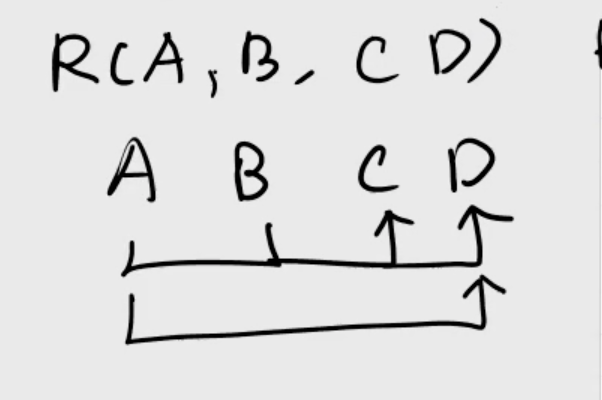
Is \( R \) in second normal form?
No, because we can remove \( B \) from the dependency \[\begin{aligned} \{A,B\} \to D \end{aligned}\] and still fulfill the depdendency via \[\begin{aligned} A \to B \end{aligned}\]
So, \( R \) is not in second normal form.
Third normal form #
Third normal form is easier to check than second normal form.
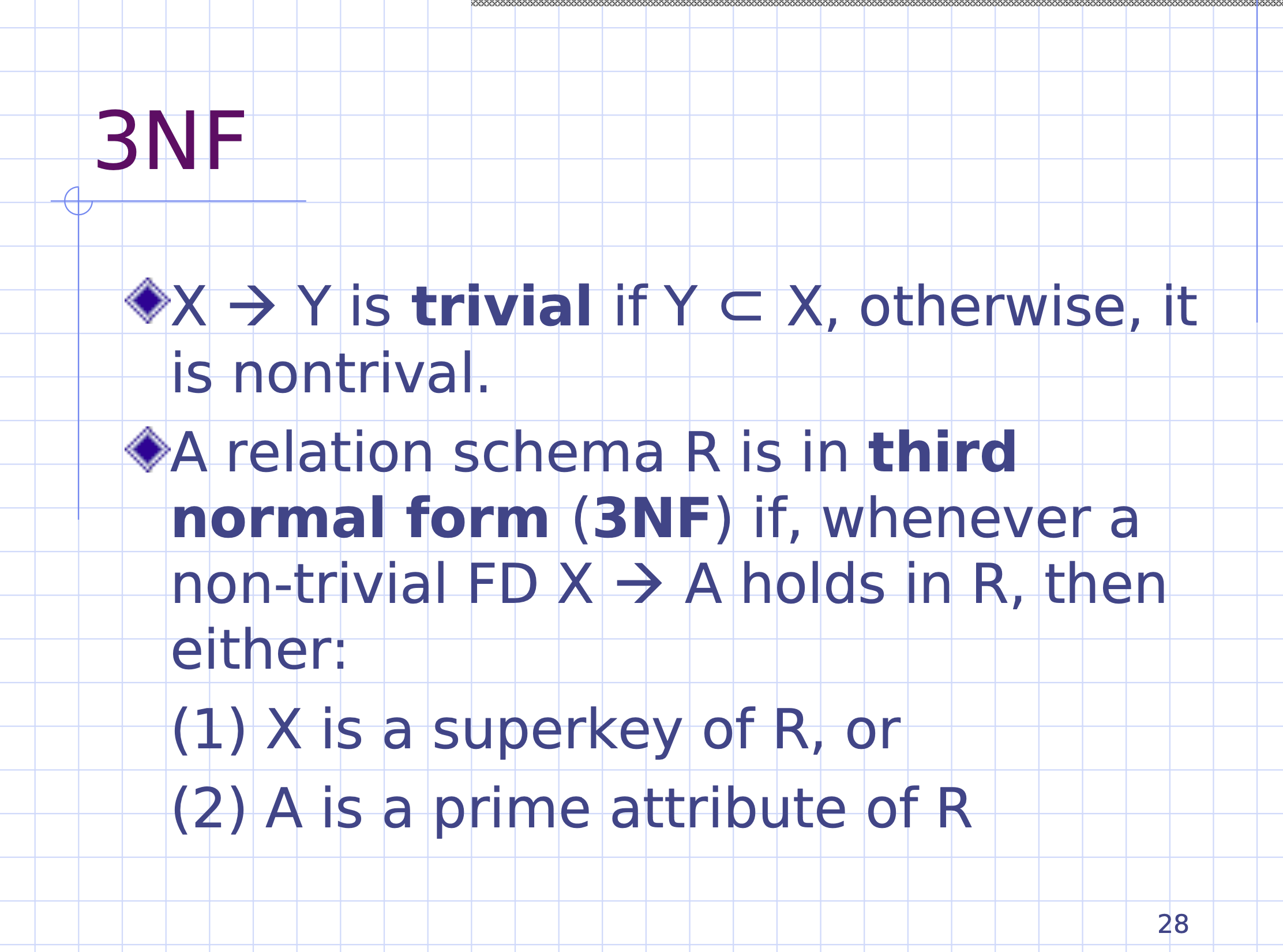
A relational schema \( R \) is in third normal form if, whenever a non-trivial functional dependency \( X \to A \) holds in \( R \) , then either
- \( X \) is a superkey of \( R \) , or
- \( A \) is a prime attribute of \( R \)
Recall, any key is a superkey:
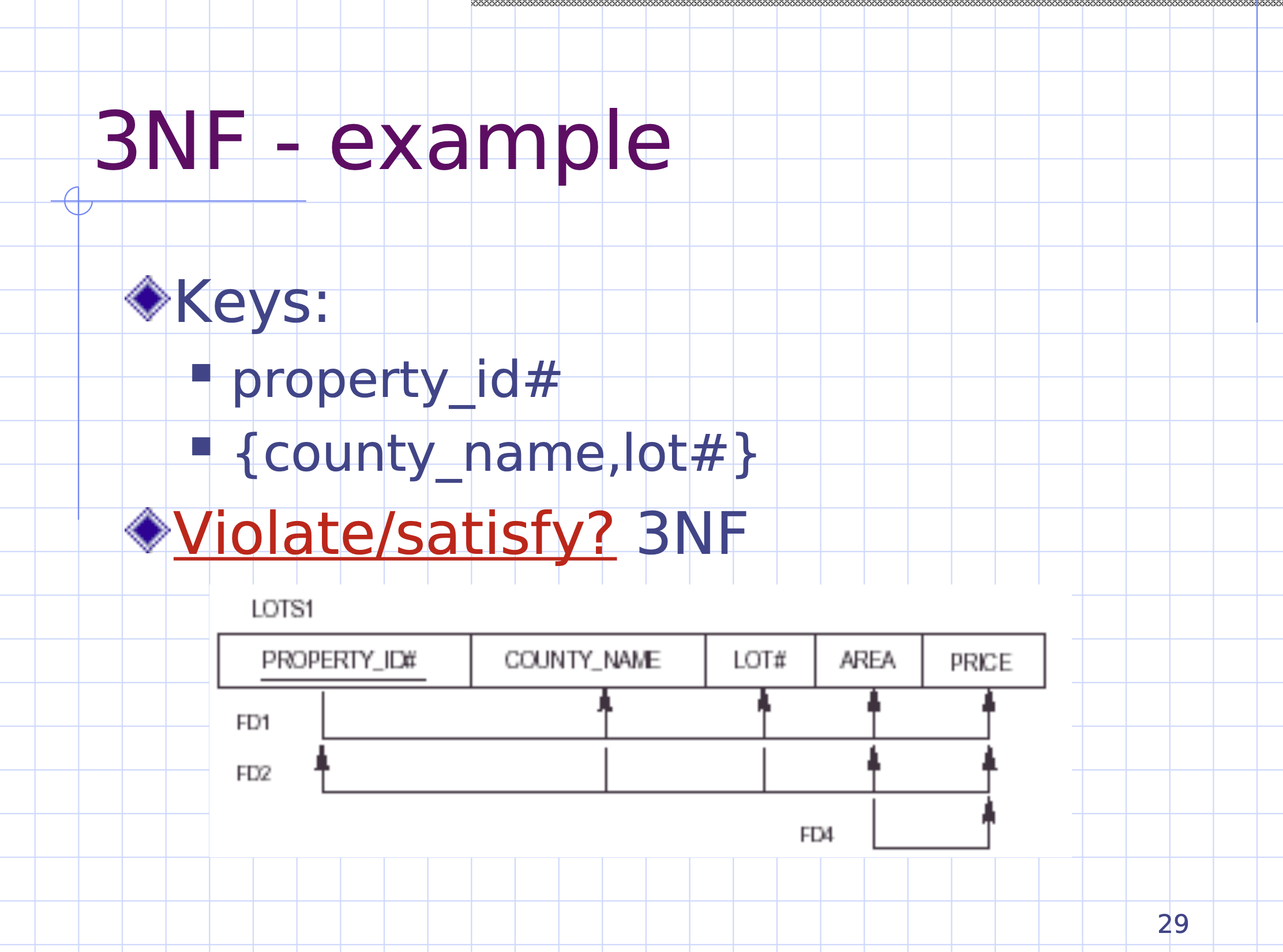
So is this schema in third normal form?
- First we should check to see if FD1 has any violation
- Check left hand set
{PROPERTY_ID}: Is this a superkey? Yes.
- Check left hand set
- Check if FD2 has any violation
- Check left hand set
{COUNTY_NAME, LOT#}: Is this a superkey? Yes.
- Check left hand set
- Check if FD4 has any violation
- Check left hand set
{AREA}: Is this a superkey? No. - Check right hand set
{PRICE}: Is this a prime attribute? No.
- Check left hand set
- Therefore, since we had a violation, this schema is not in third normal form.
In class exercise #
Include in weekly homework.
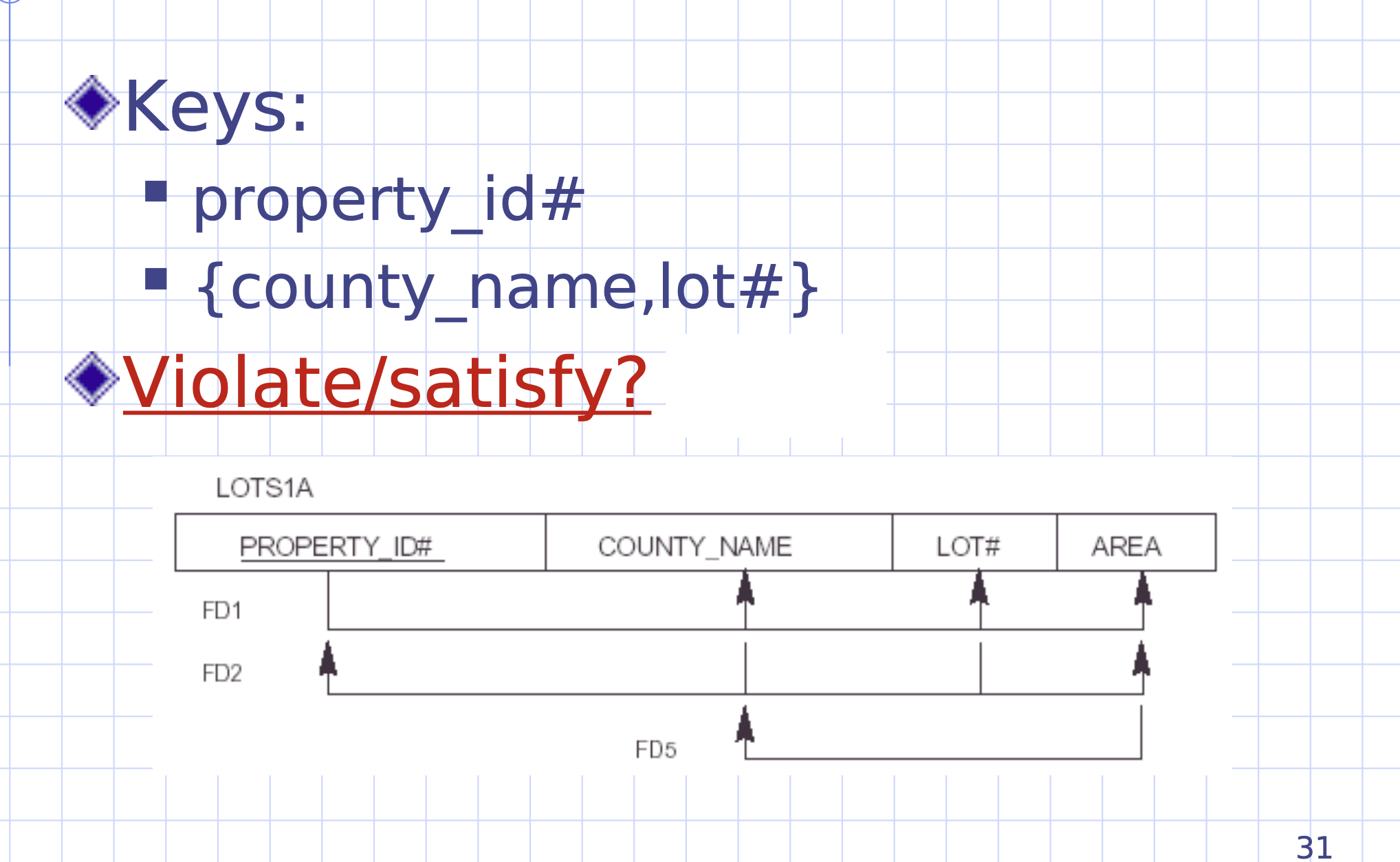
Is this schema in third normal form?
- Check FD1
- Left hand set is a superkey, good.
- Check FD2
- Left hand set is a superkey, good.
- Check FD5
- Left hand set is not a superkey…
- Right hand set is a prime attribute, good.
- Therefore, this schema is in third normal form.
Boyce-Codd normal form (BCNF) #
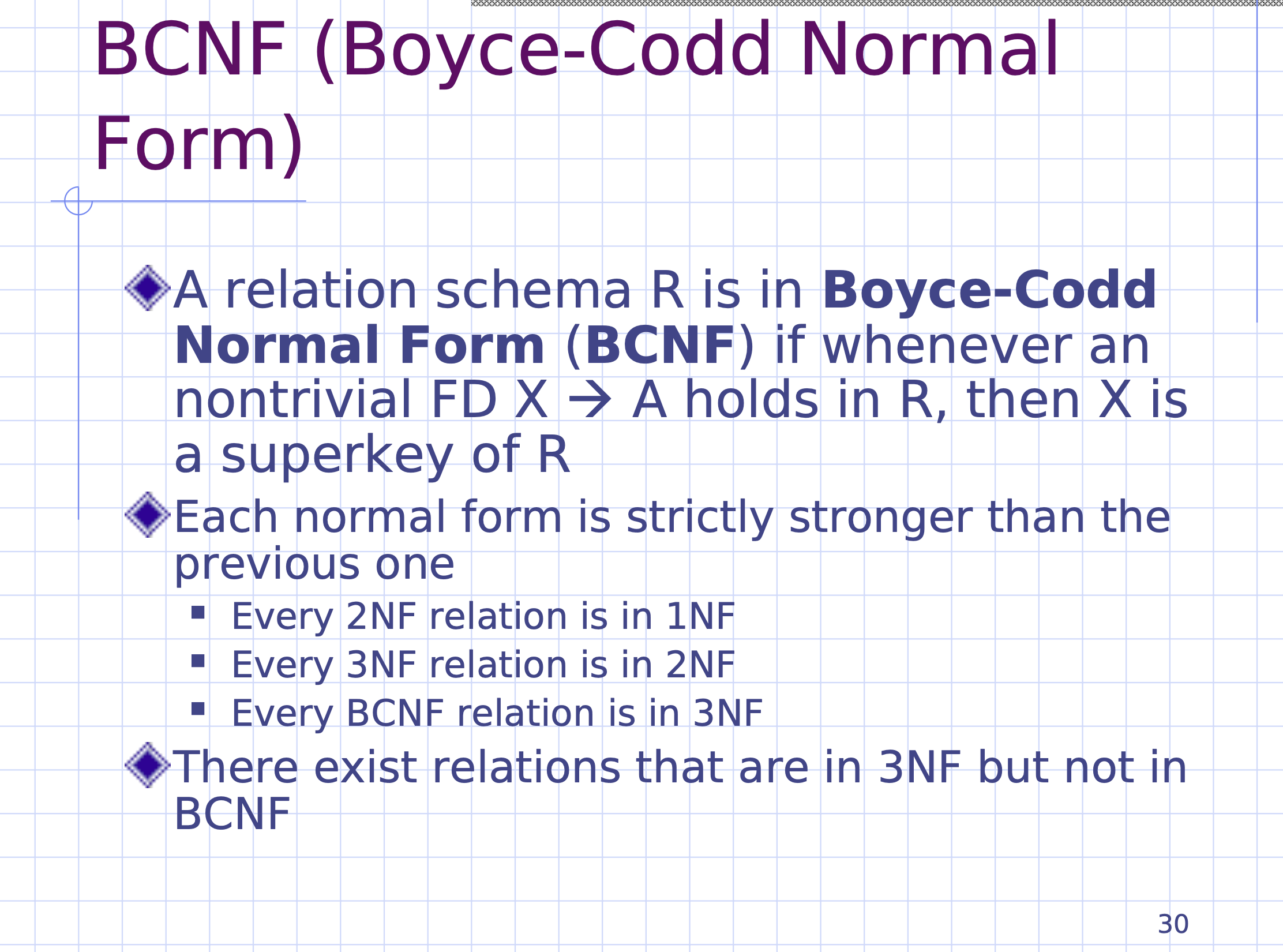
This is the highest normal form we will study.
A relational schema \( R \) is in Boyce-Codd Normal Form (BCNF) if whenever a nontrivial functional dependency \( X \to A \) holds in \( R \) , then \( X \) is a superkey of \( R \) .
This is a stricter version of the third normal form, it only checks the first condition.
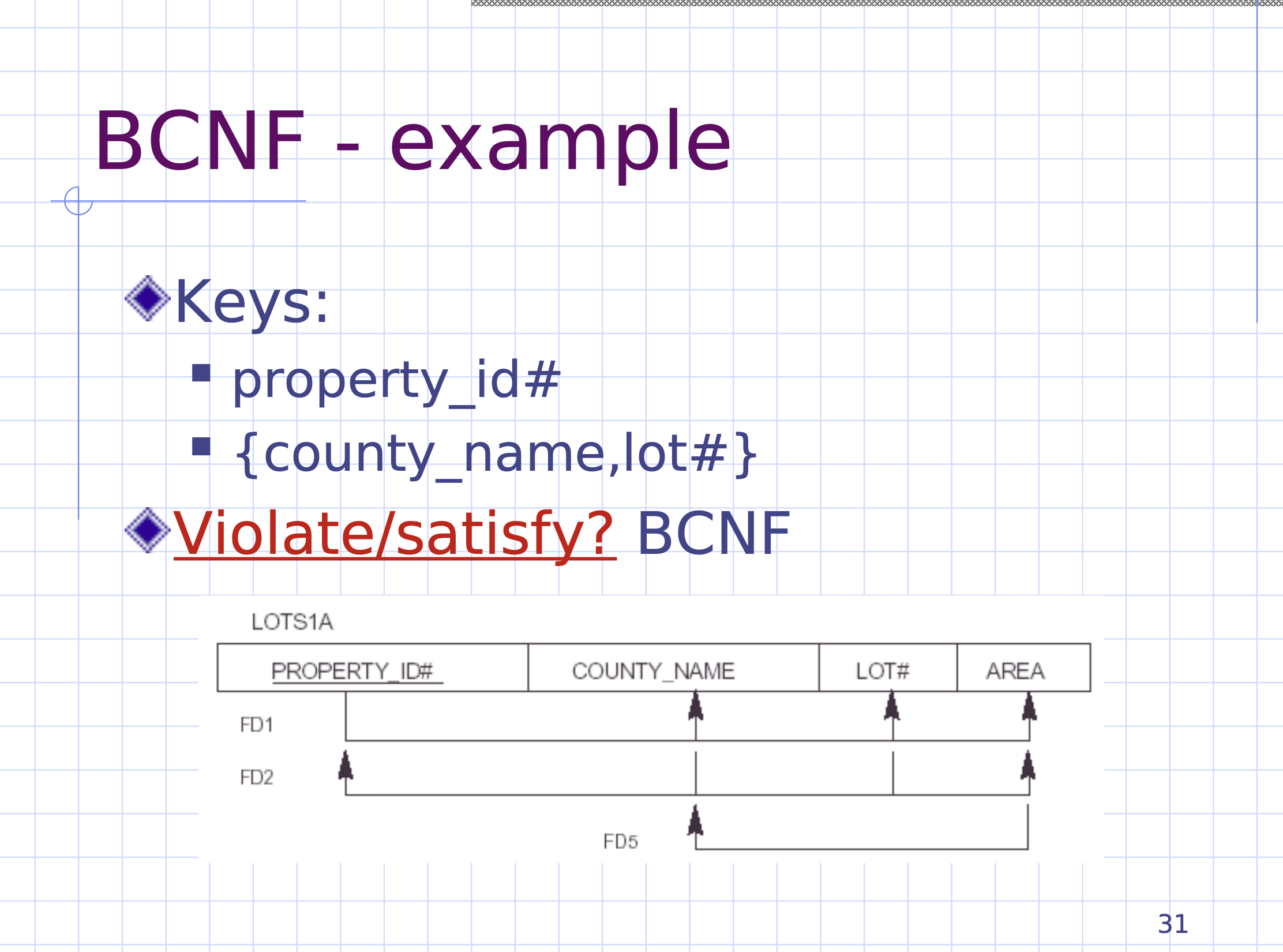
Is this schema in BCNF?
- Check FD1
- Left hand set is a superkey, good.
- Check FD2
- Left hand set is a superkey, good.
- Check FD5
- Left hand set is not a superkey.
- Therefore, this schema is not in BCNF.
Normal form examples #
If we have the relation \[\begin{aligned} R(A, B, C, D, E) \end{aligned}\] with key \( \{A,B\} \) , and we have these dependencies:
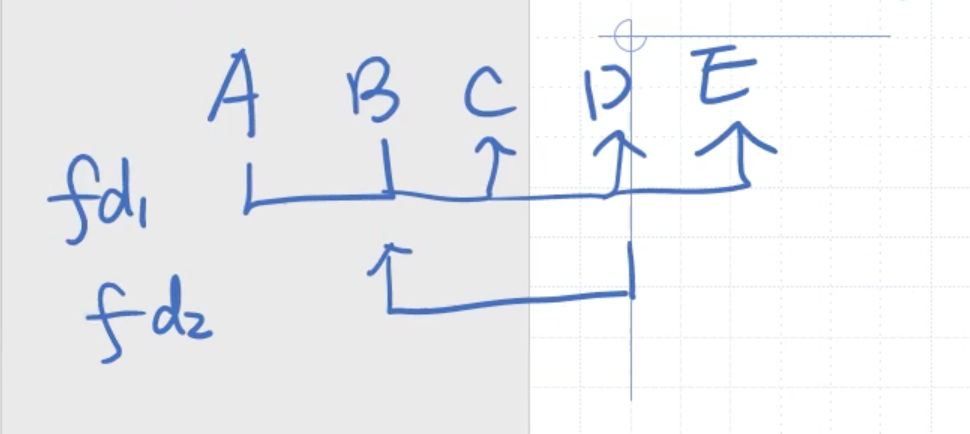
Which normal form is \( R \) in? Why?
- Is
\( R \)
in BCNF?
- FD1: left hand set is a superkey? Yes
- FD2: left hand set is a superkey? No
- Not in BCNF
- Is
\( R \)
in third normal form?
- FD1: left hand set is a superkey? Yes
- FD2: left hand set is a superkey? No. Right hand set prime attribute? Yes
- Passed third normal form checks
Therefore, \( R \) is in third normal form.
Note: We can check normal forms in increasing or decreasing order.
Storage #
File: Storage slides
Now that we’ve finished studying implementation, we will look at physical storage. We will look closer at how a DBMS accesses files on disk.
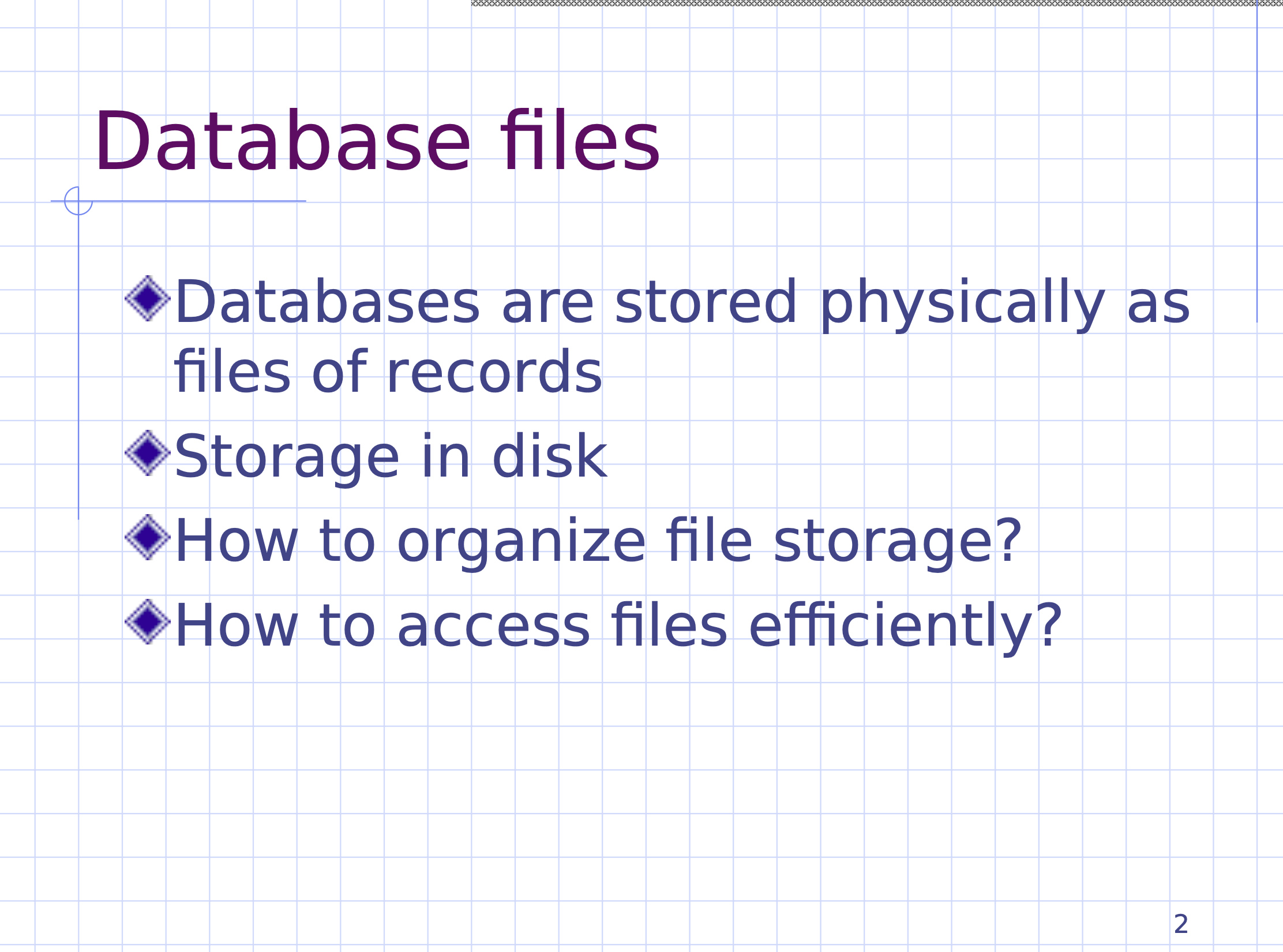
Specific file format meant for read/write by the DBMS.
Physical storage #
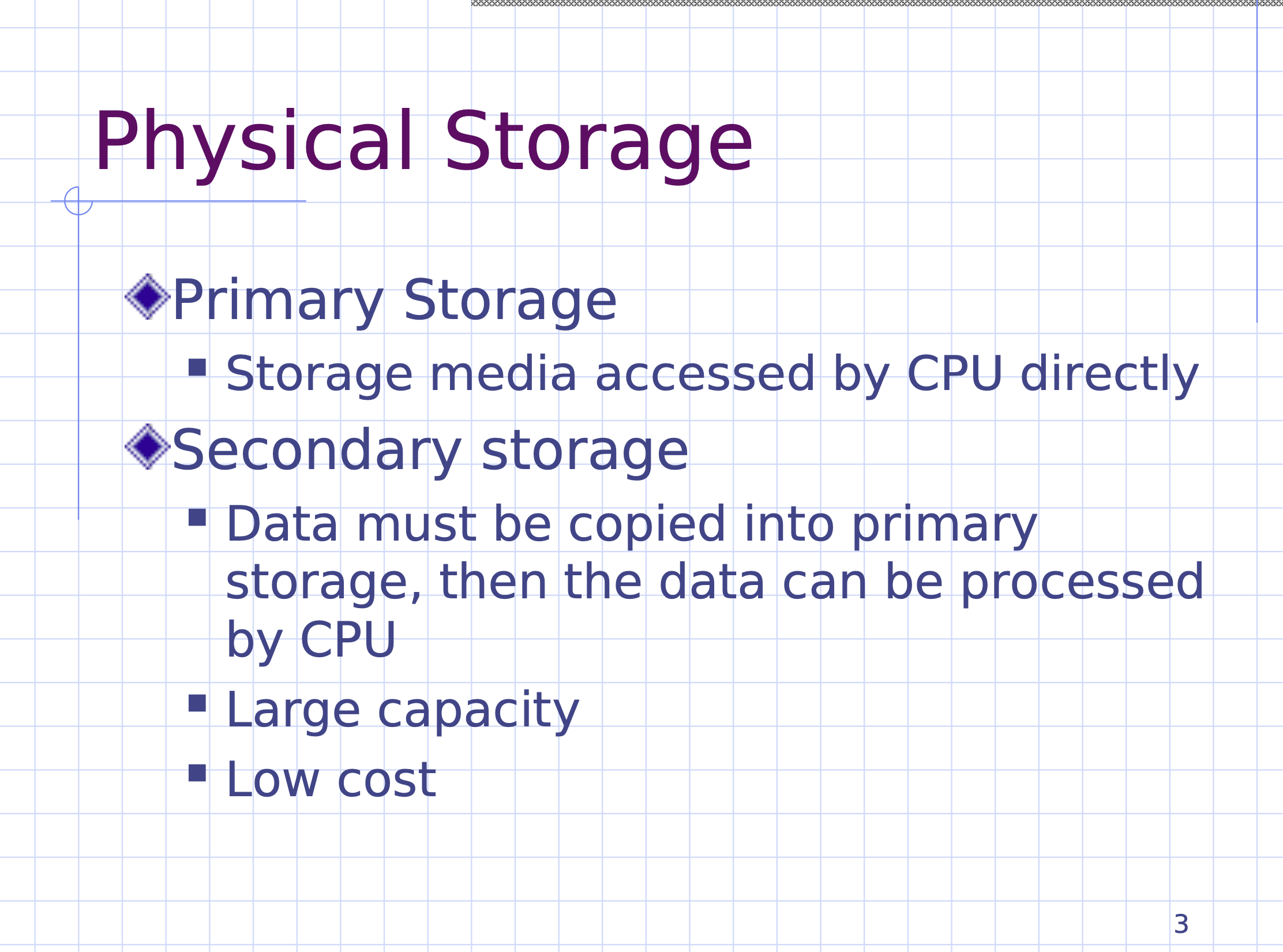
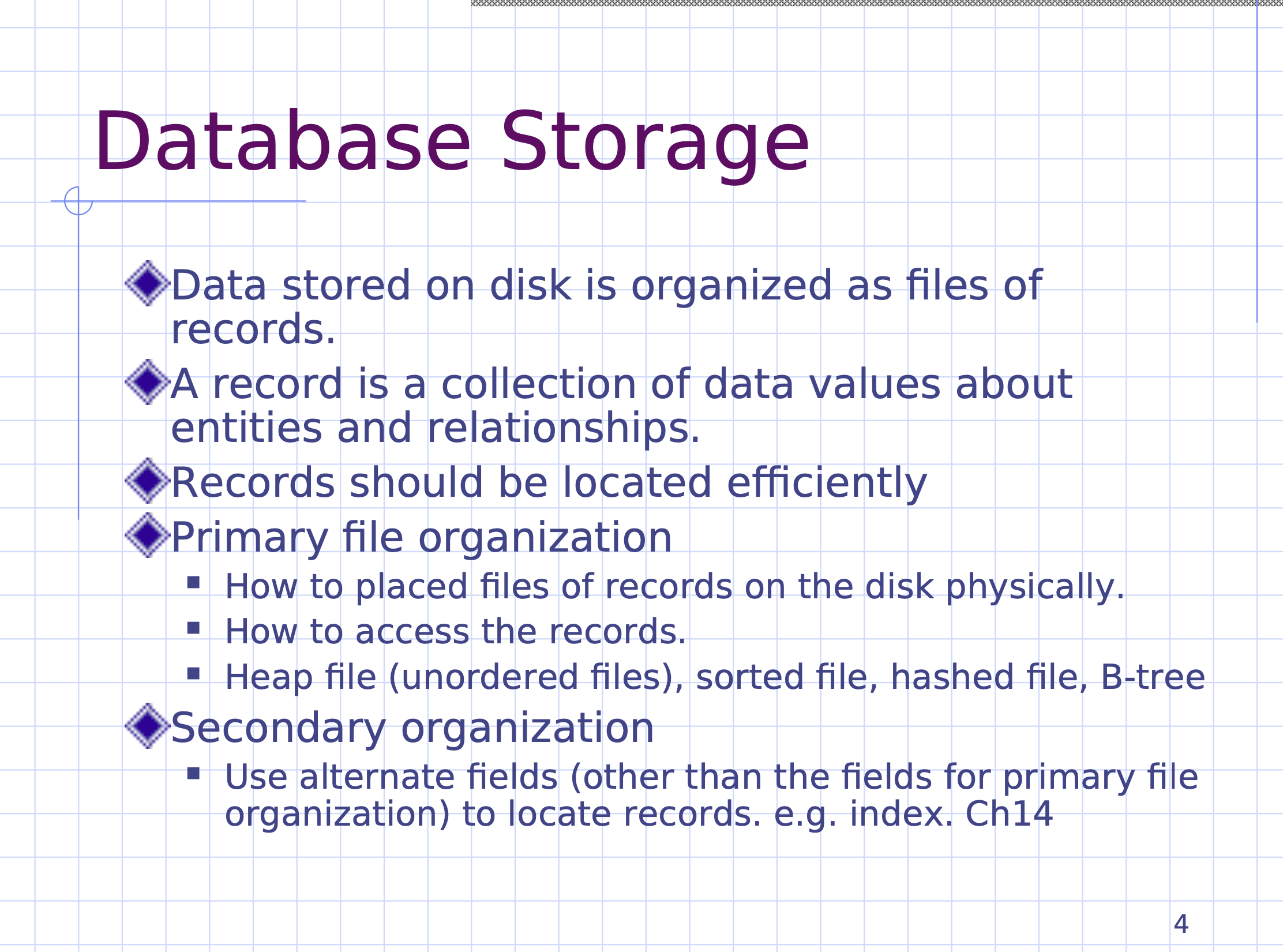
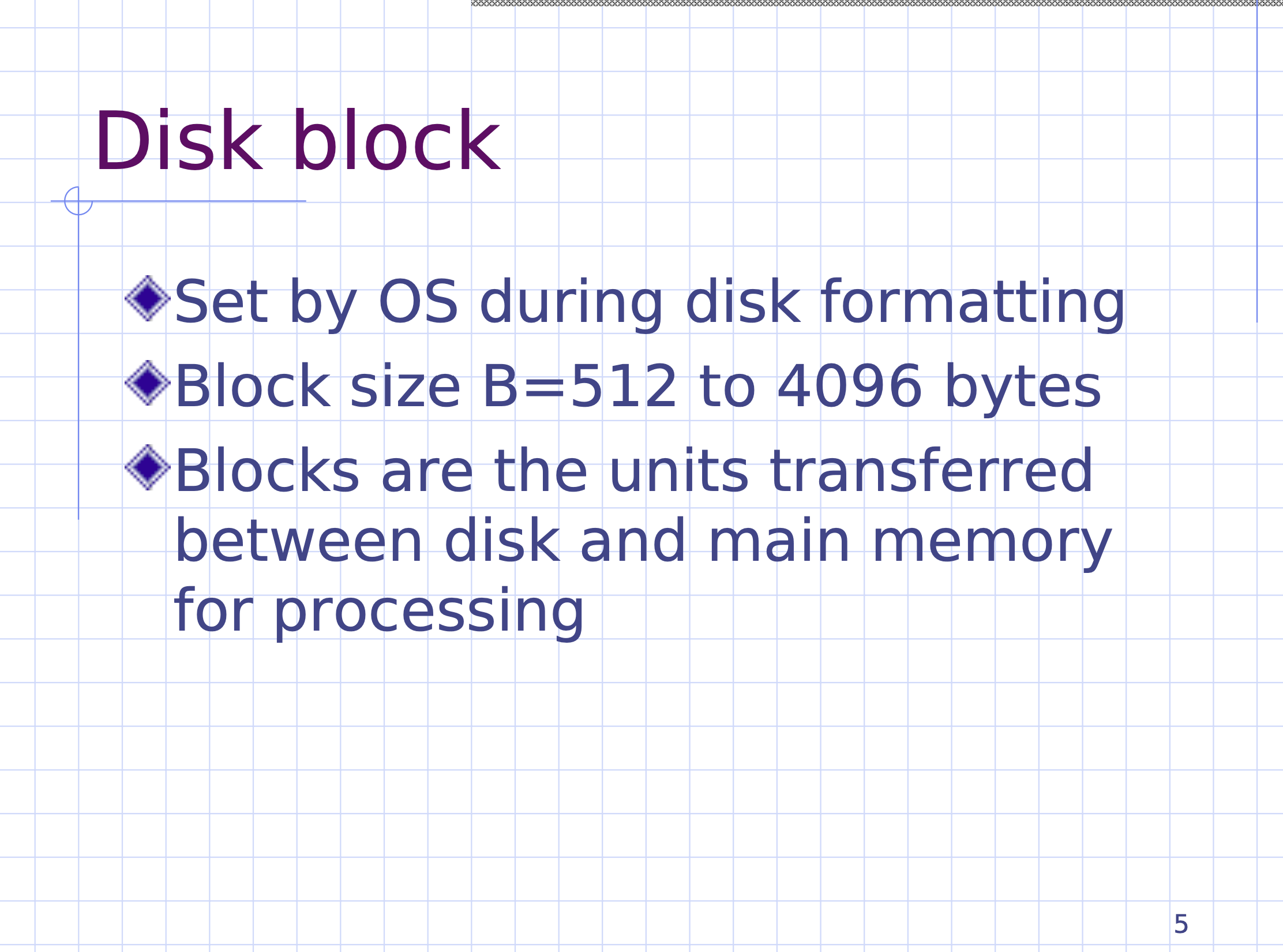
Records #
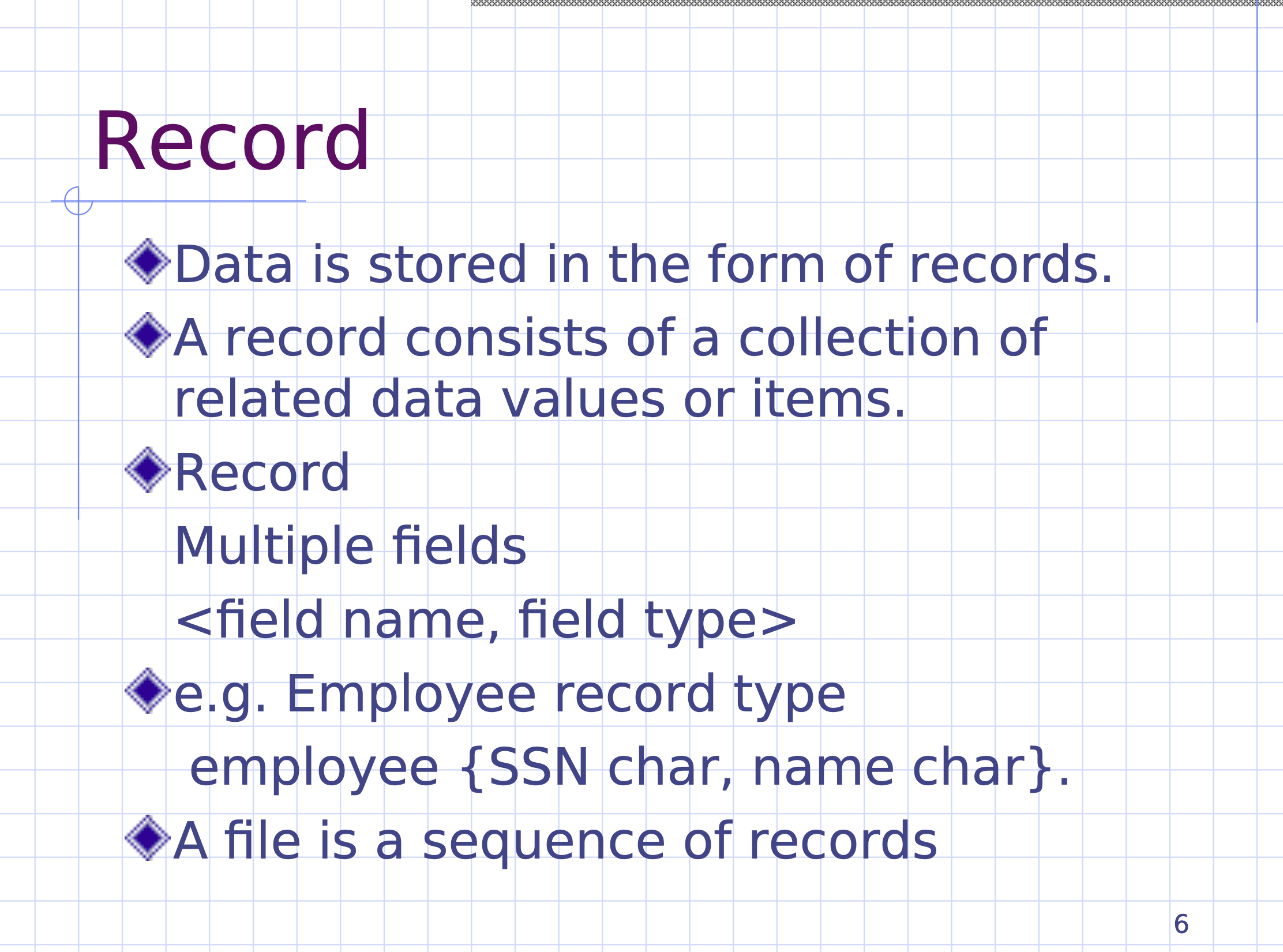
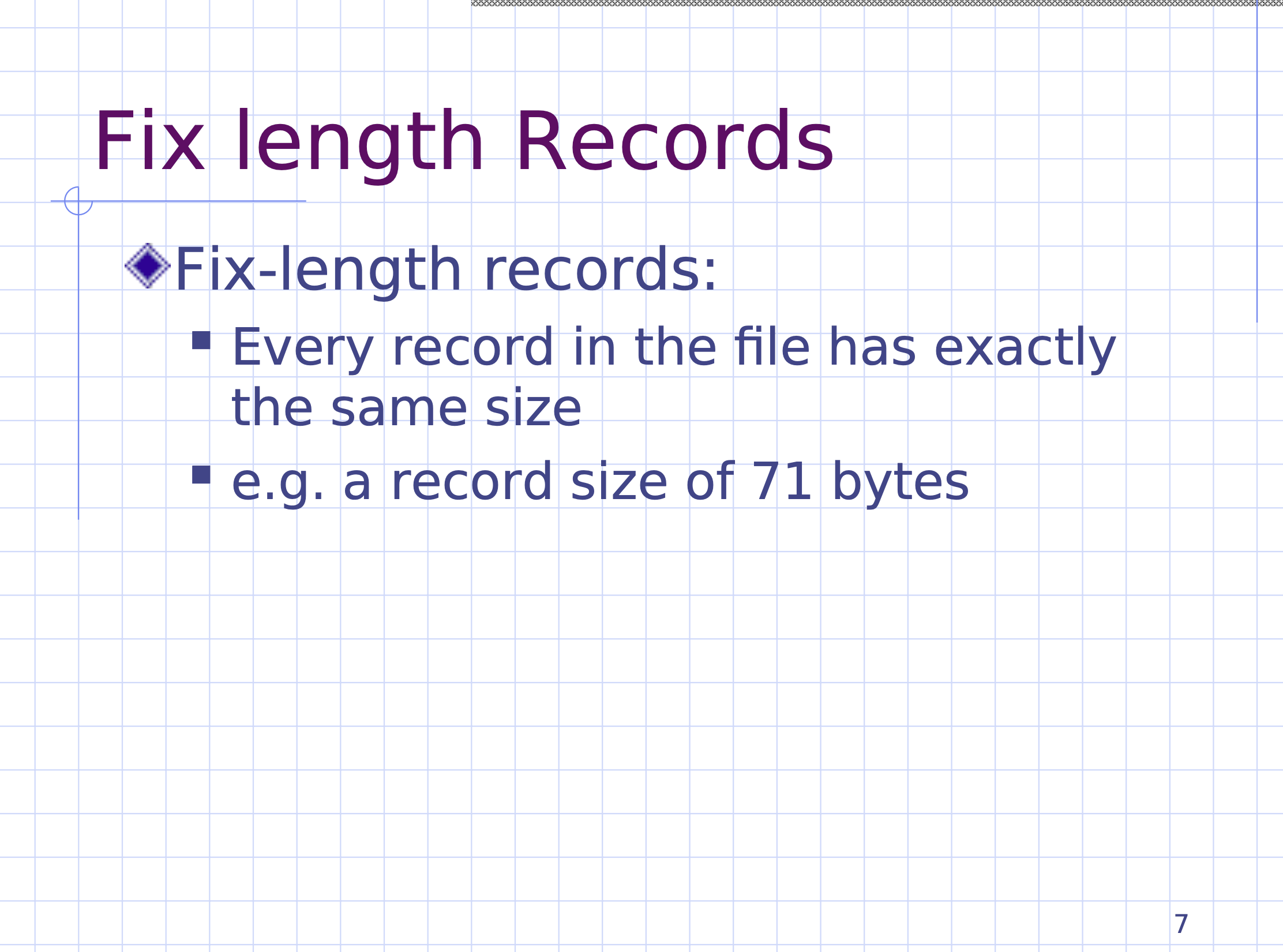
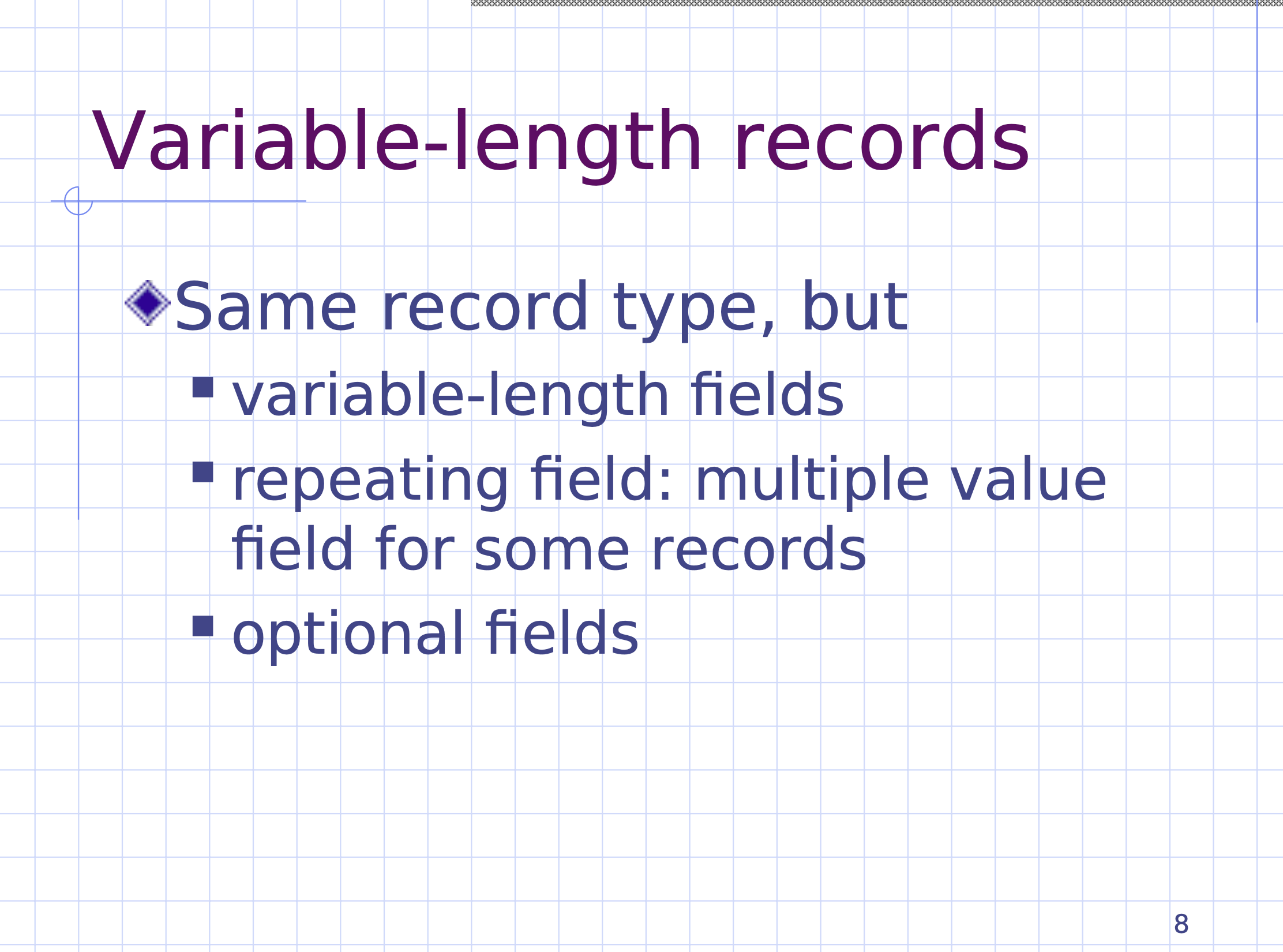
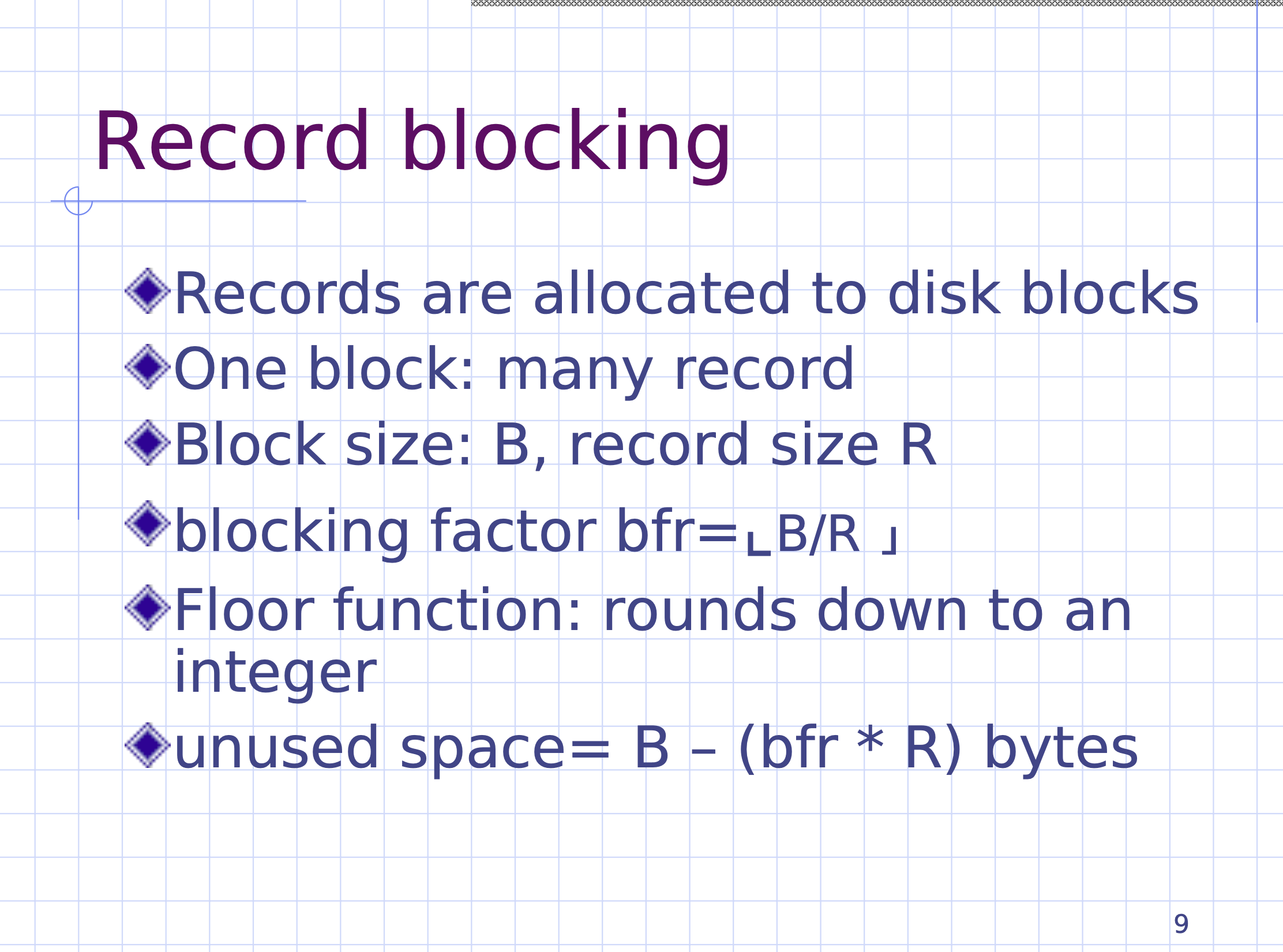
Record spanning #
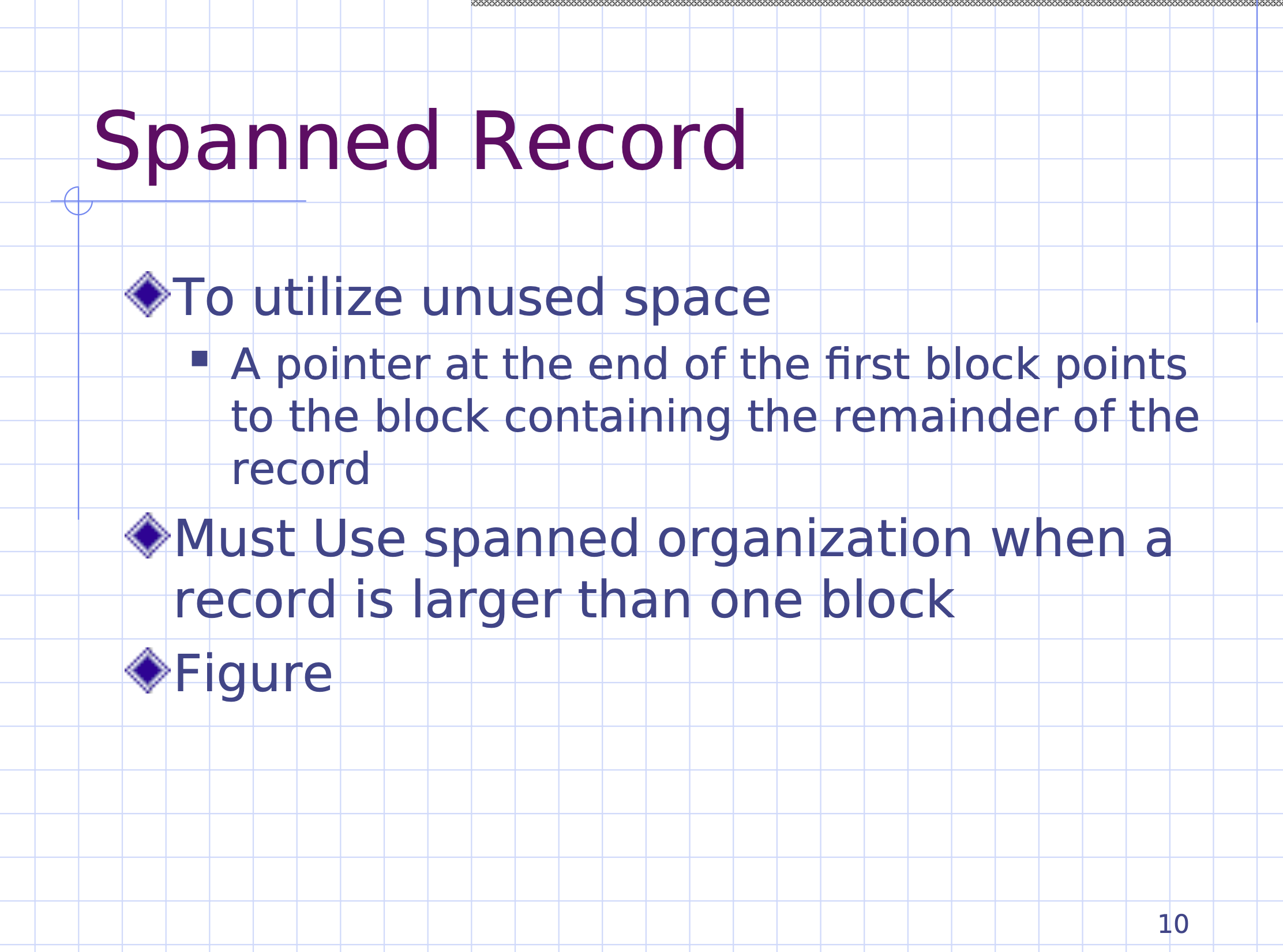
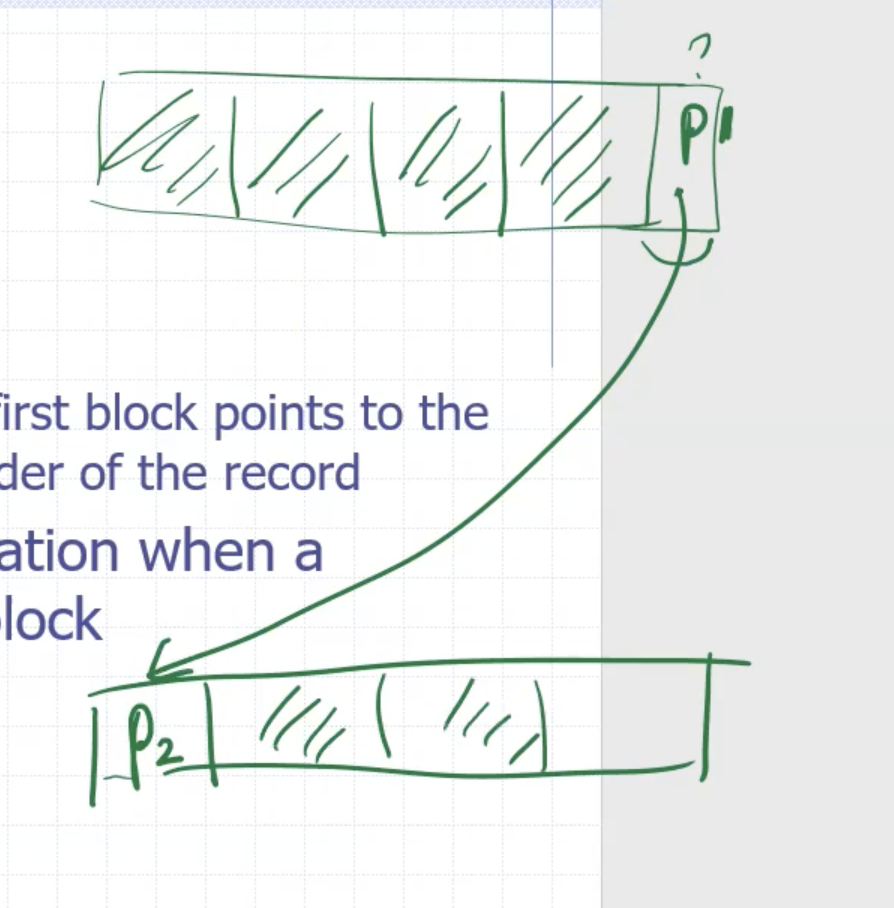
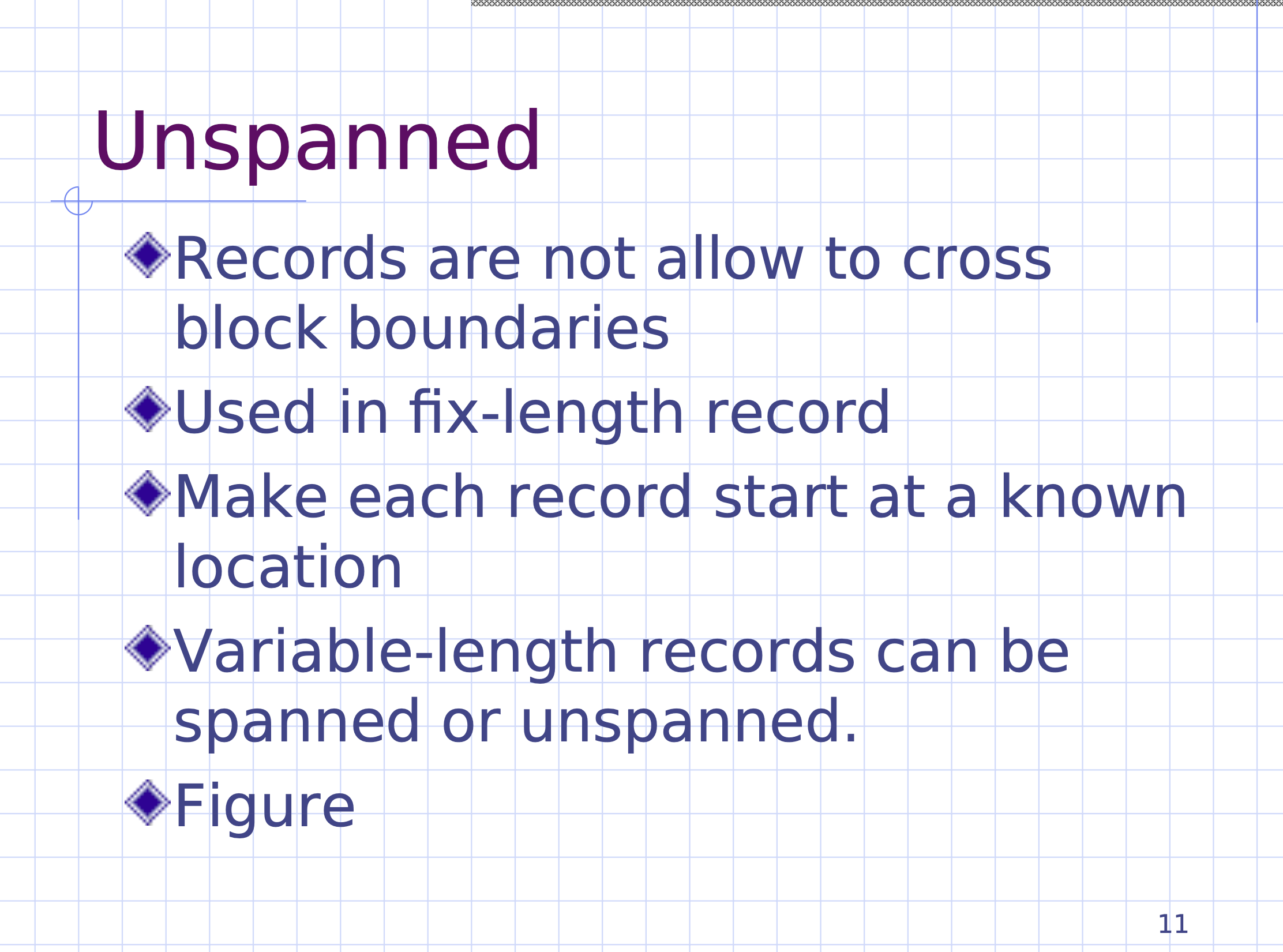
File headers #
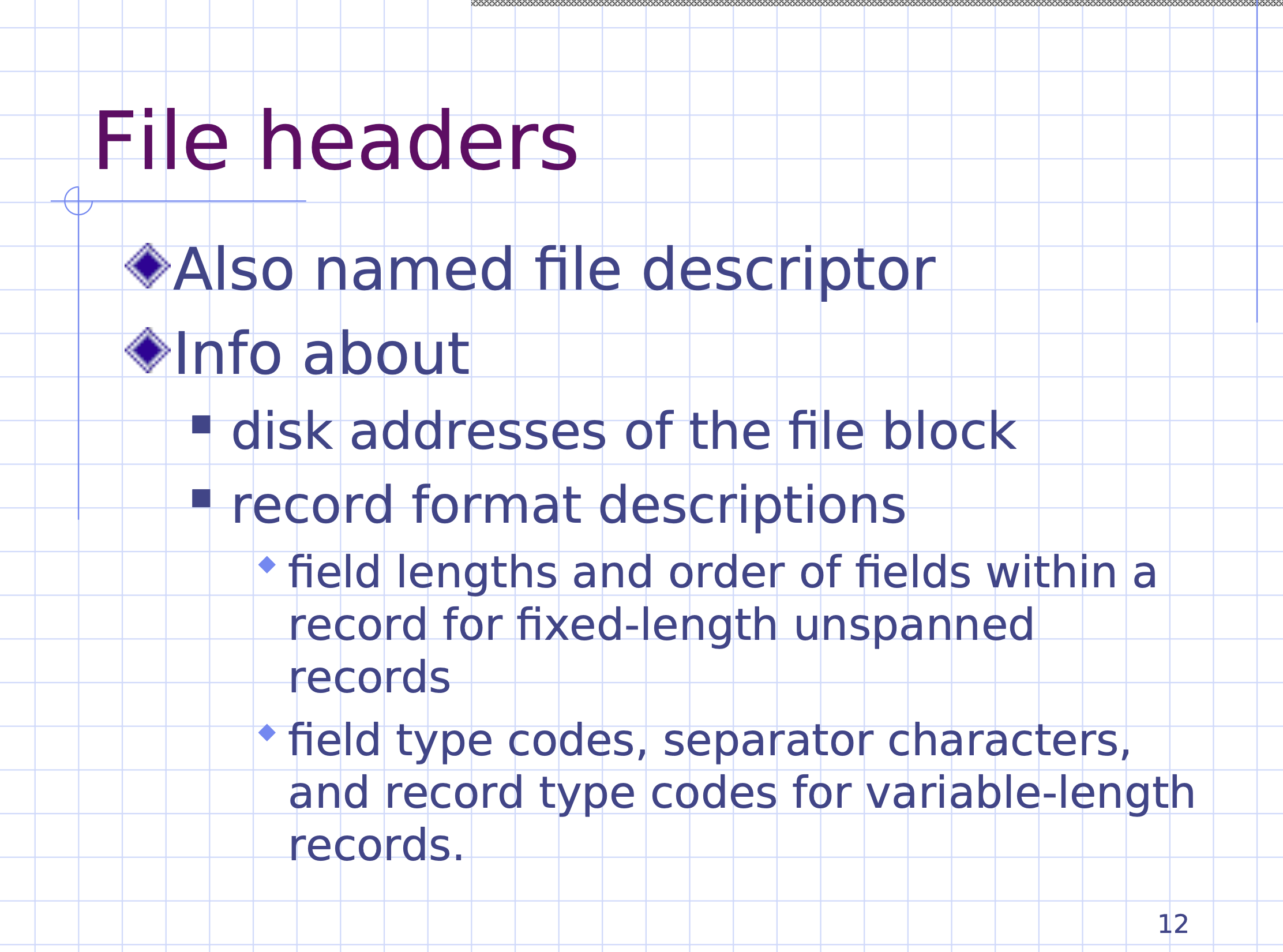
File operations #
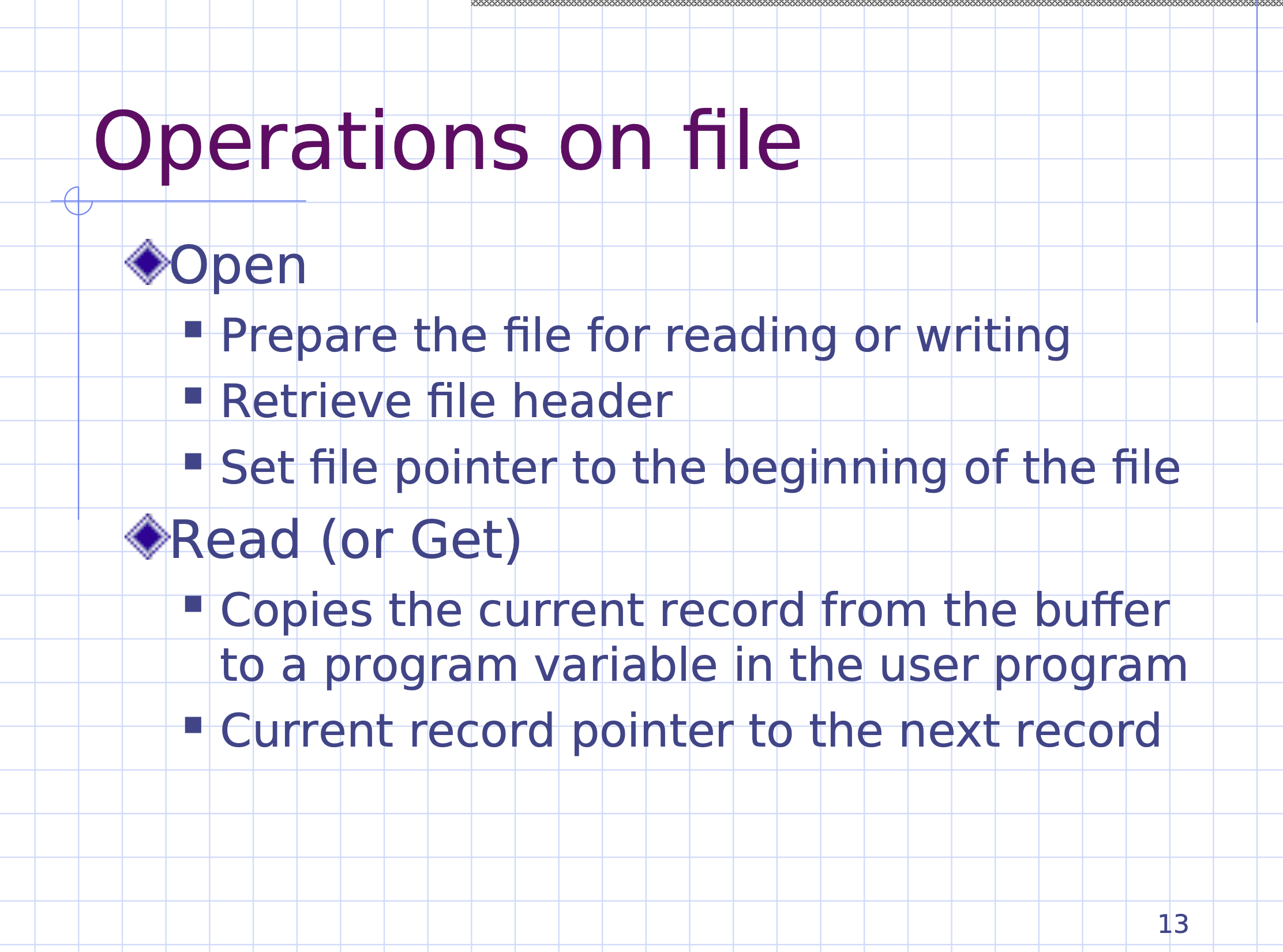
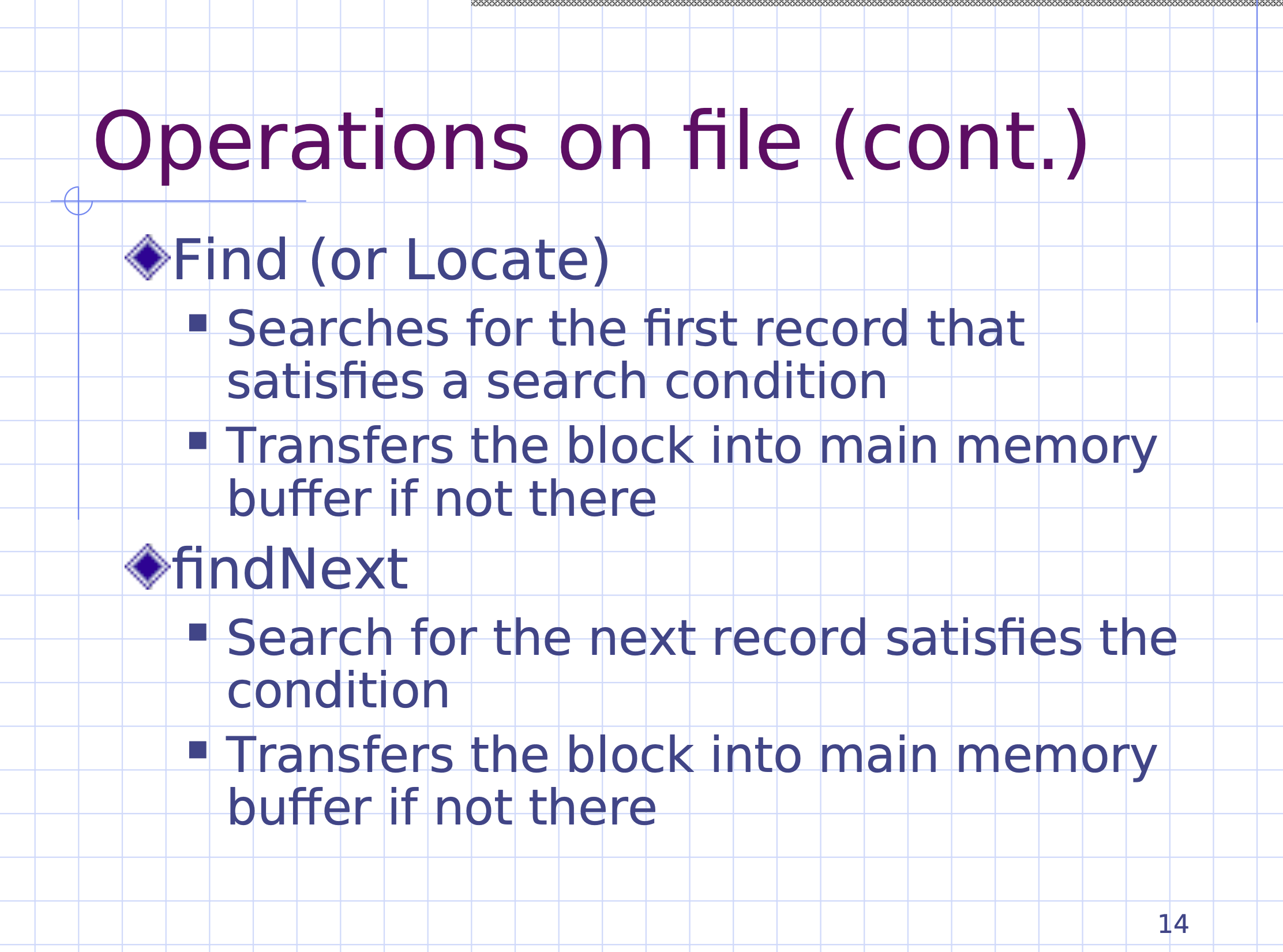
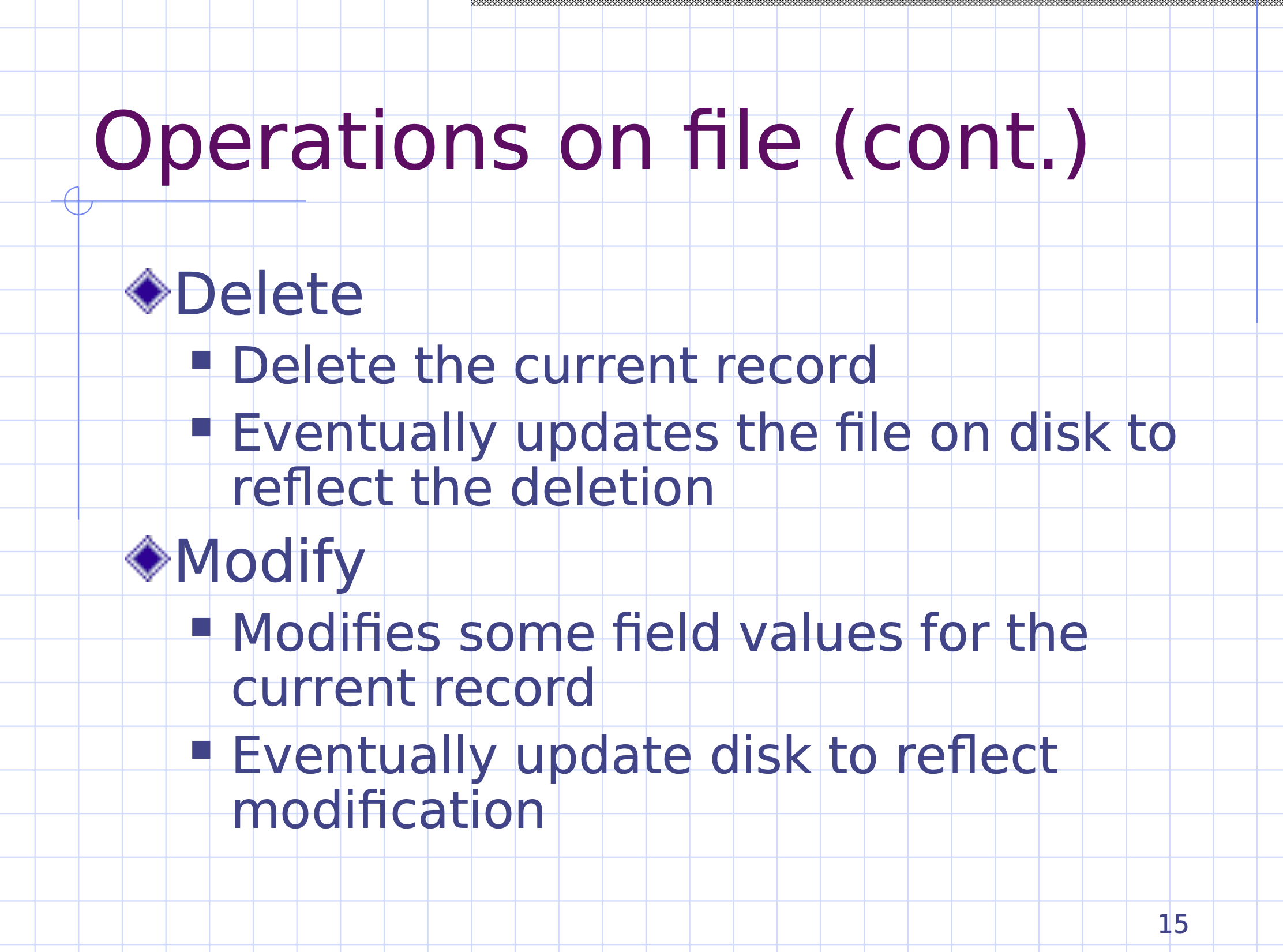
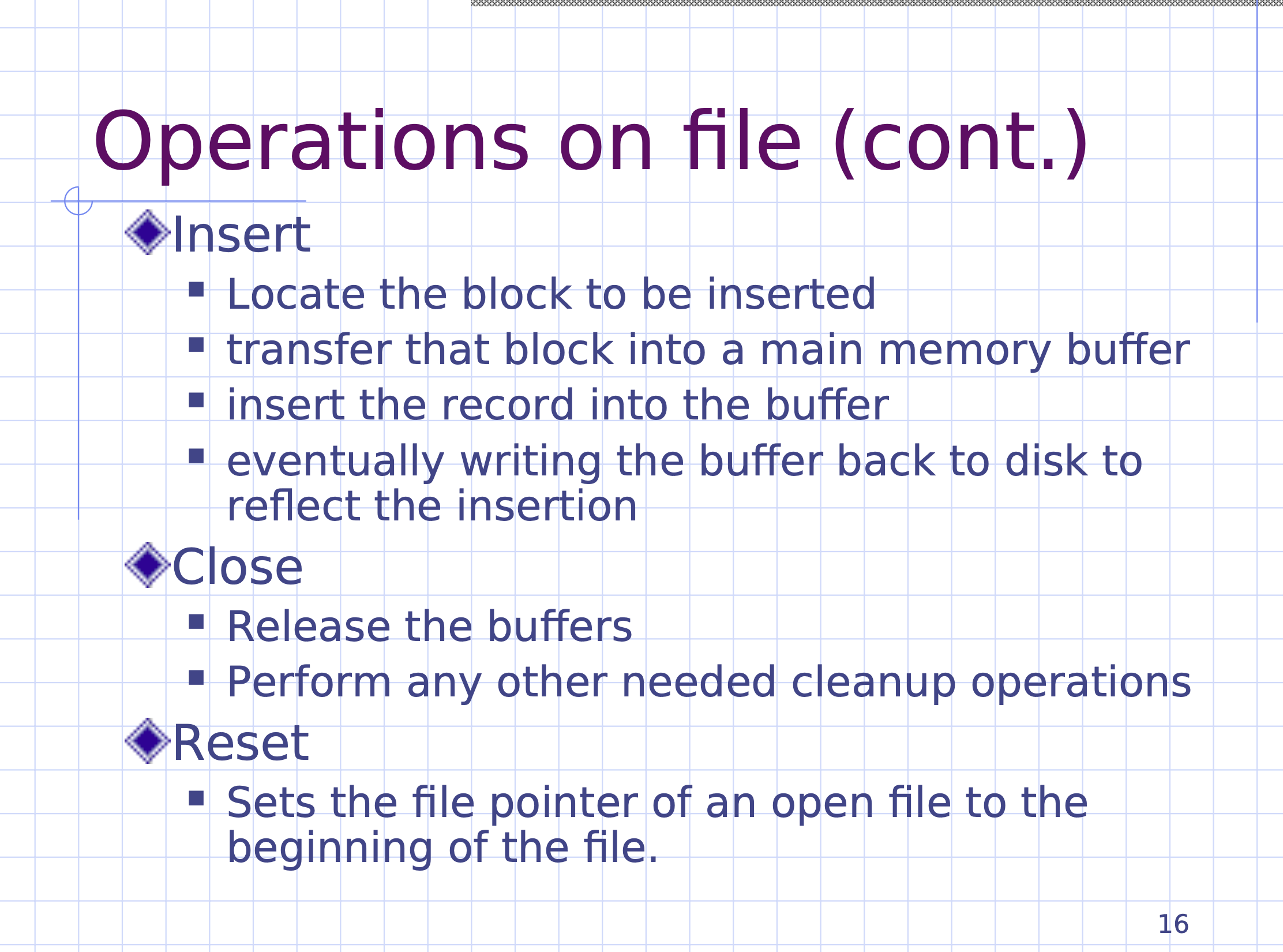
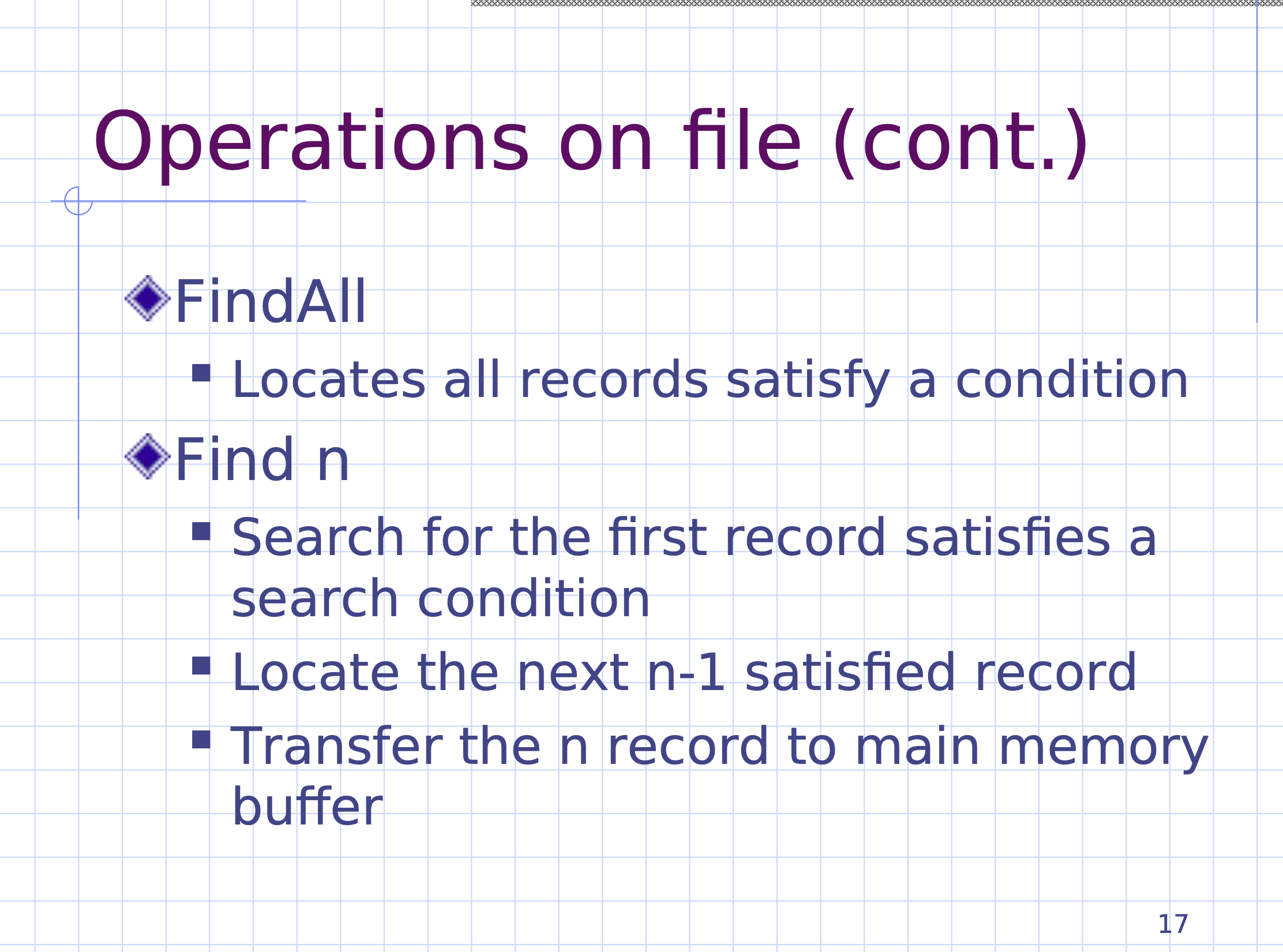
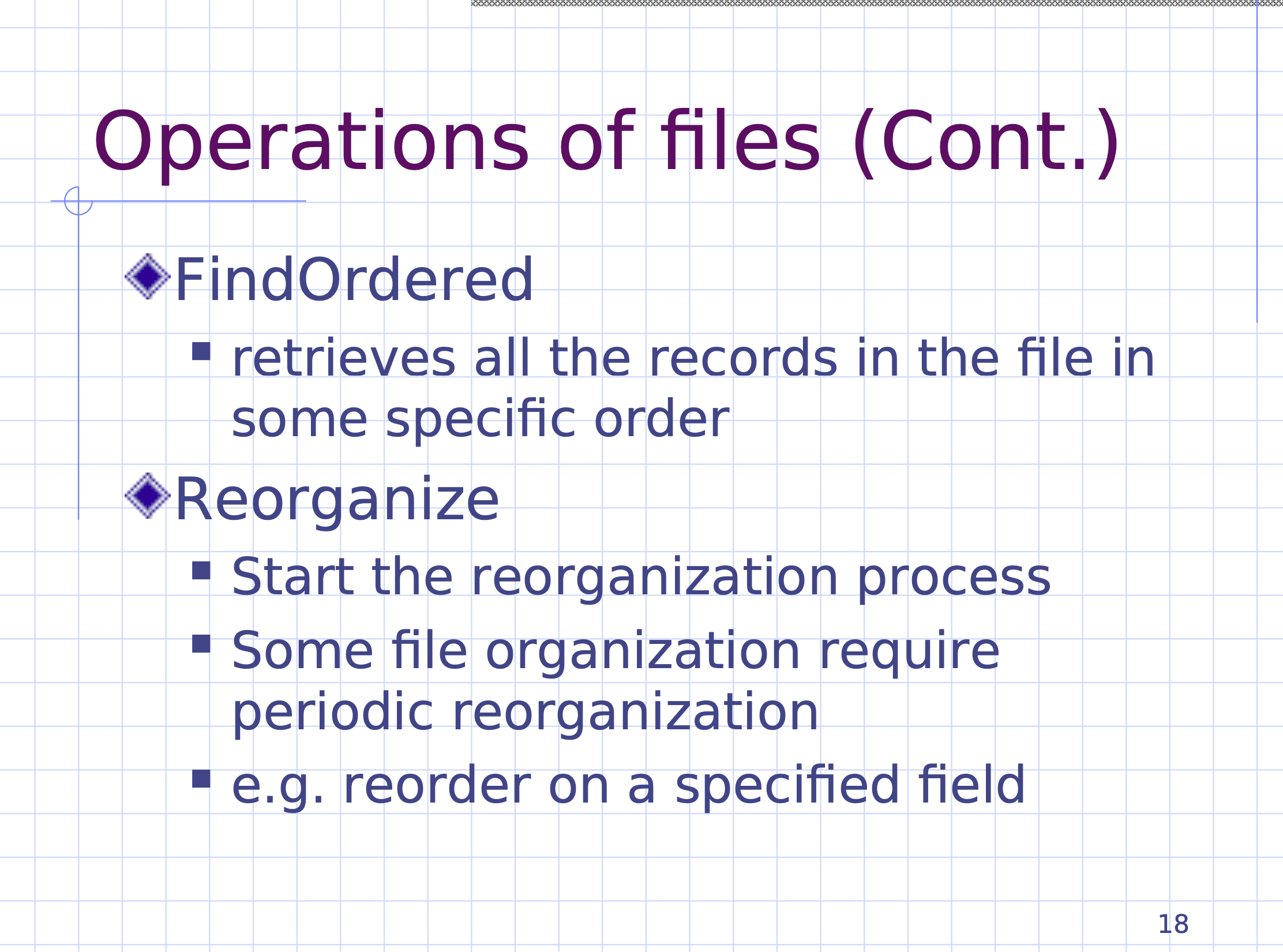
Record ordering #
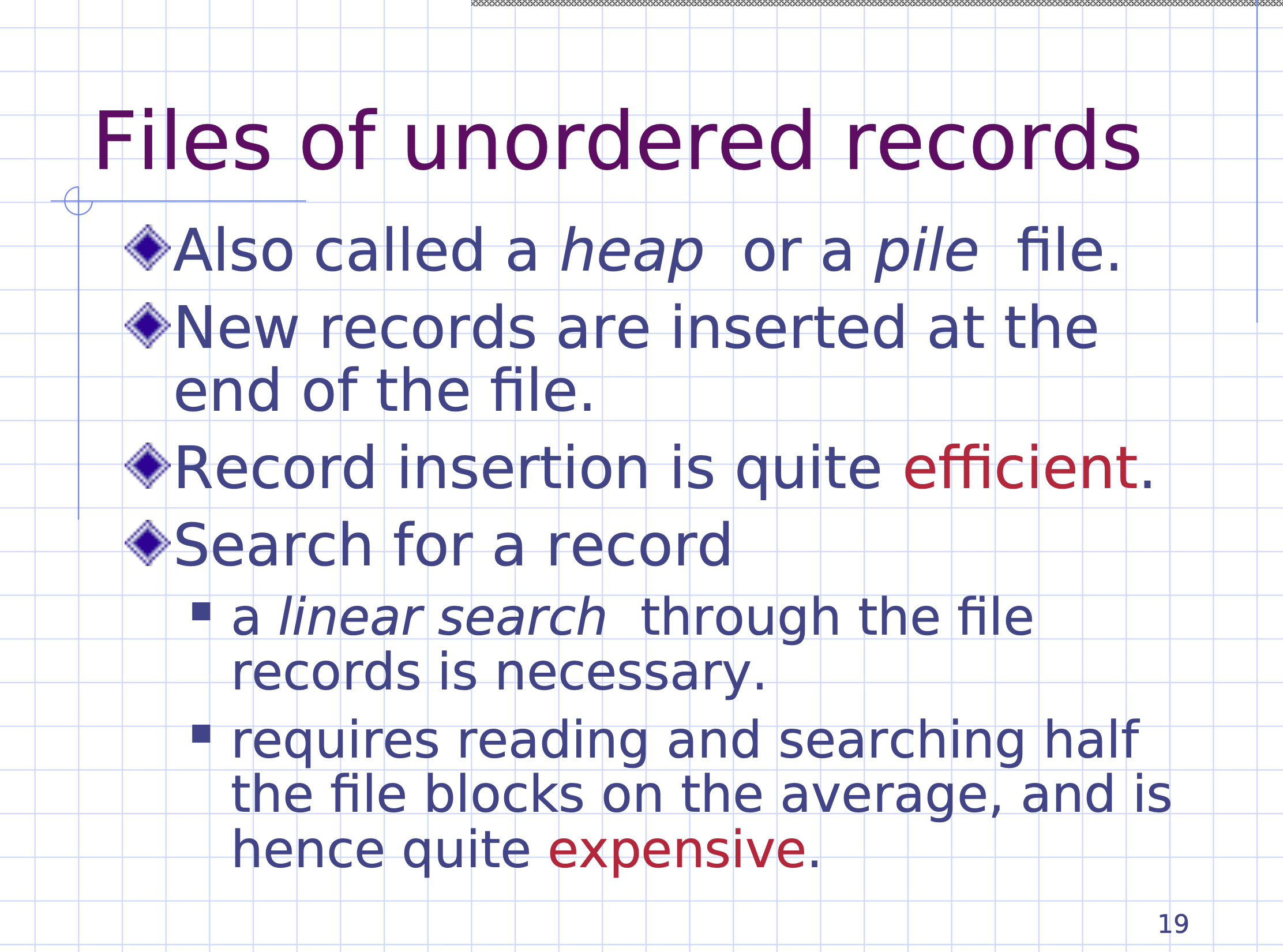
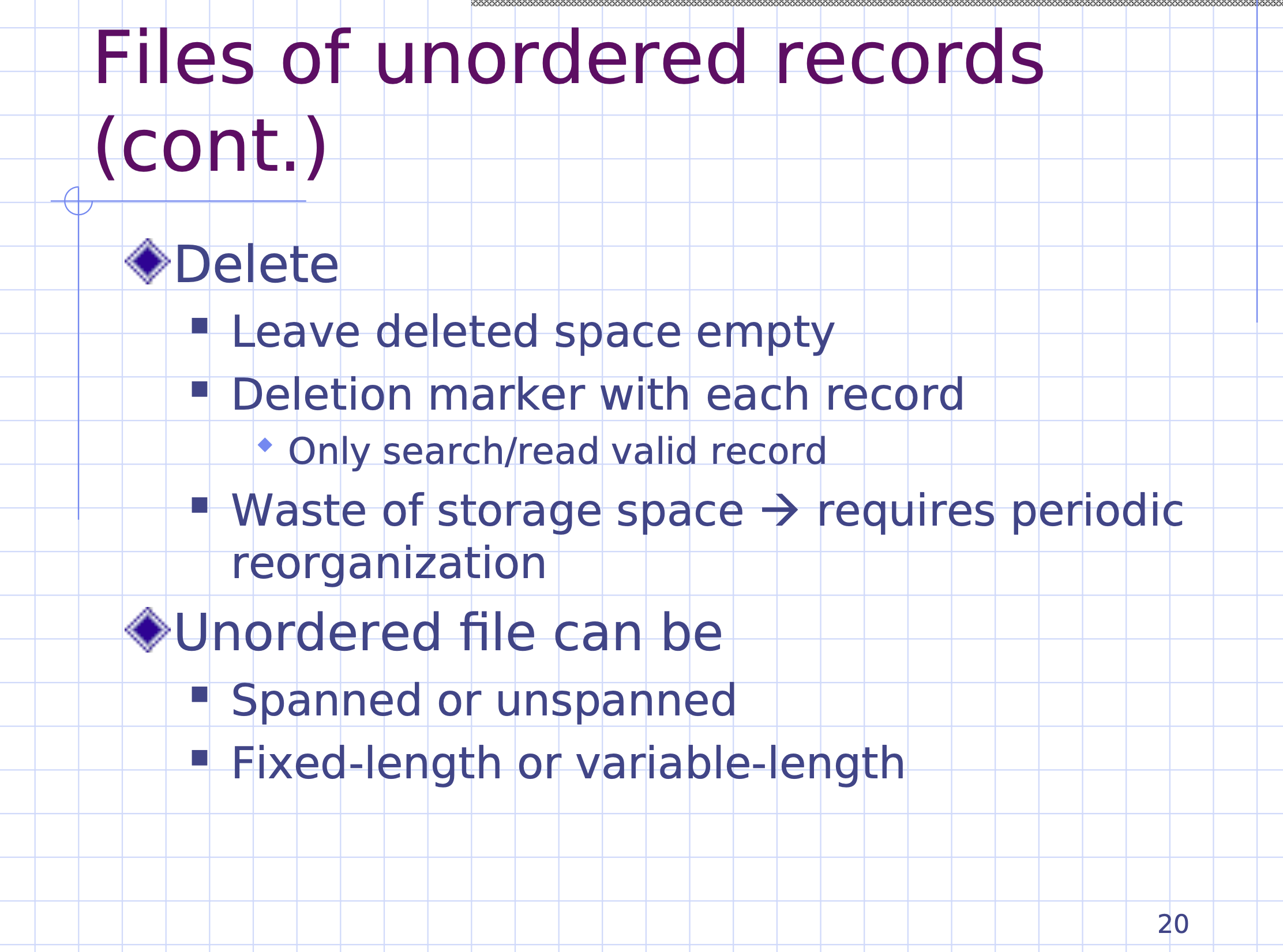
Moving items when deleting from the middle, ie
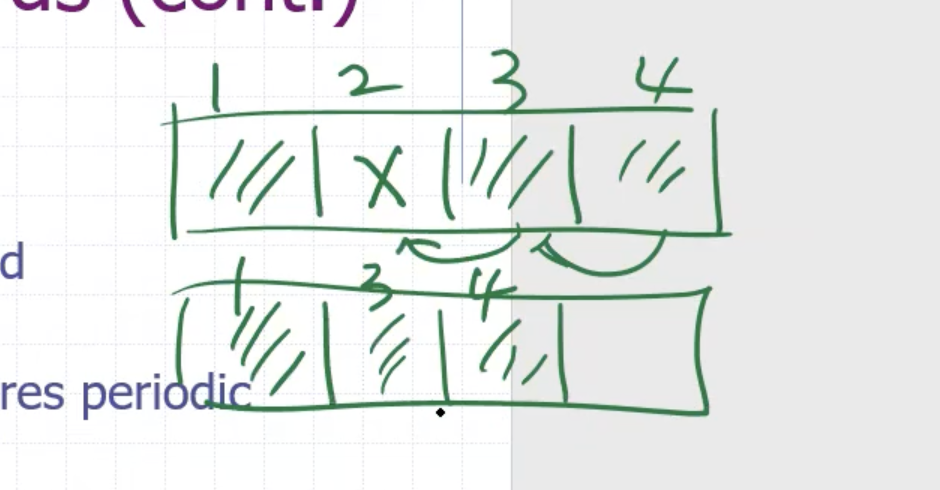
can be really expensive. So instead we put a marker for deletion in place
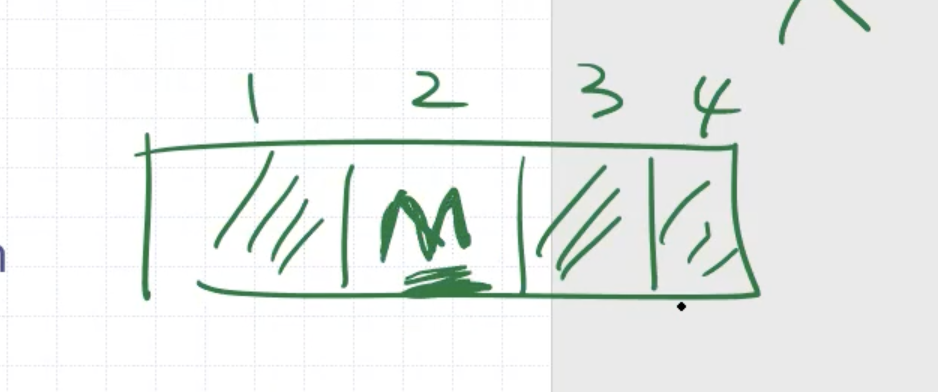
Once there are a lot of markers in a block, space will have to be reorganized.
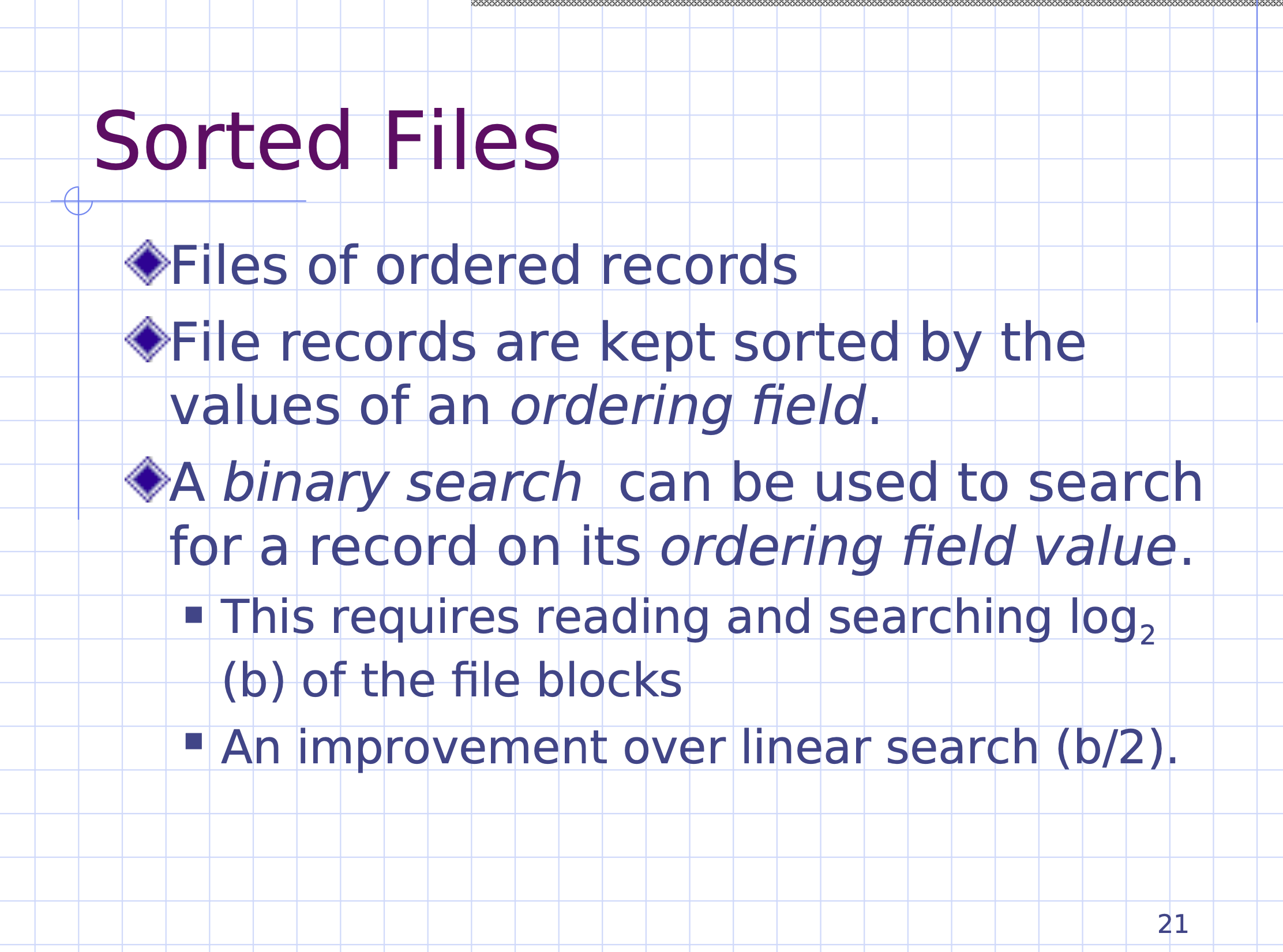
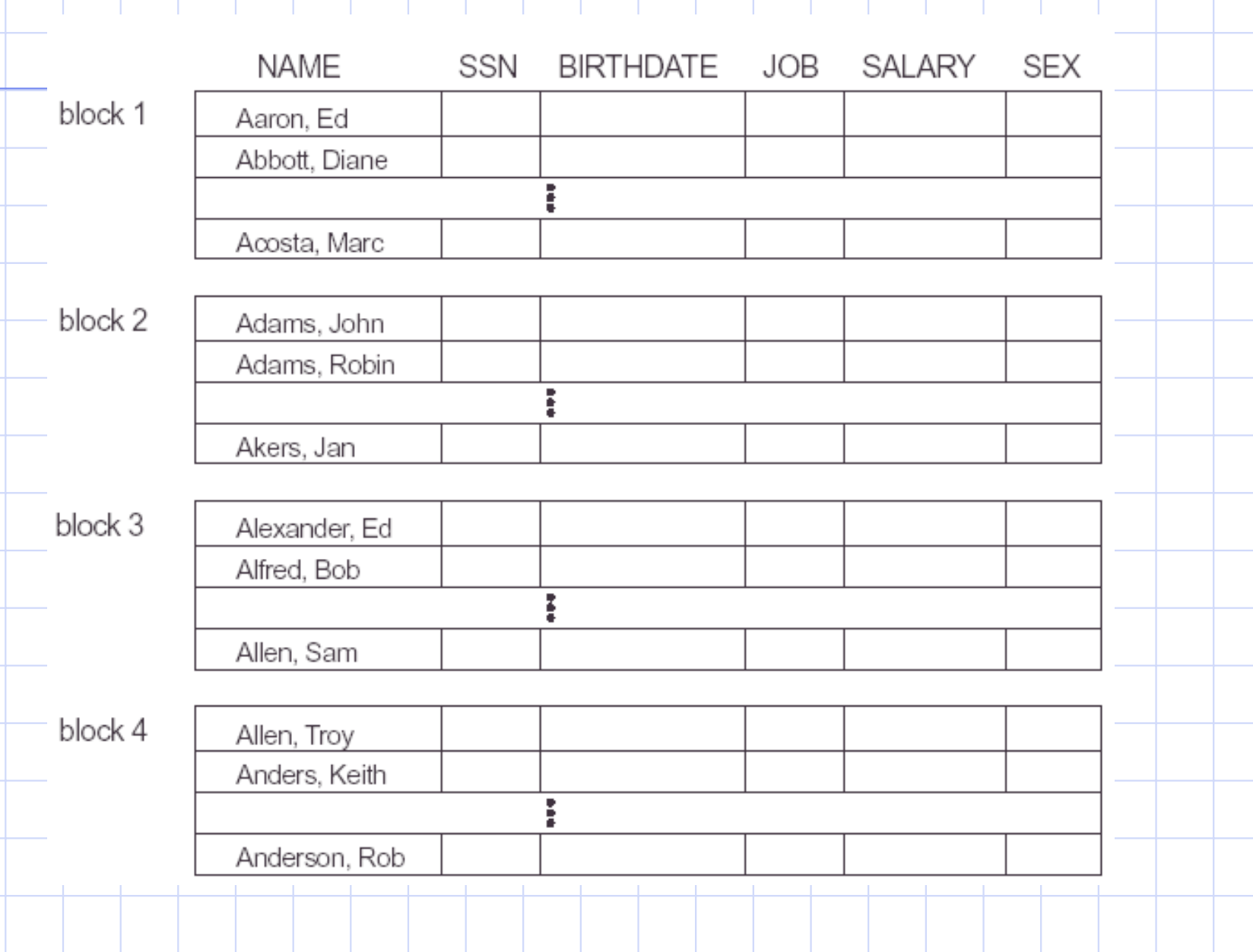
- This file spans multiple blocks
- It is sorted by name
- If we search based by name, we can use binary search, resulting in \( O(\lg n) \) time complexity.
- If we search by salary, best we can do is a linear search, resulting in
\( O(n) \)
time complexity.
- If we order by salary, then we could use a binary search.
